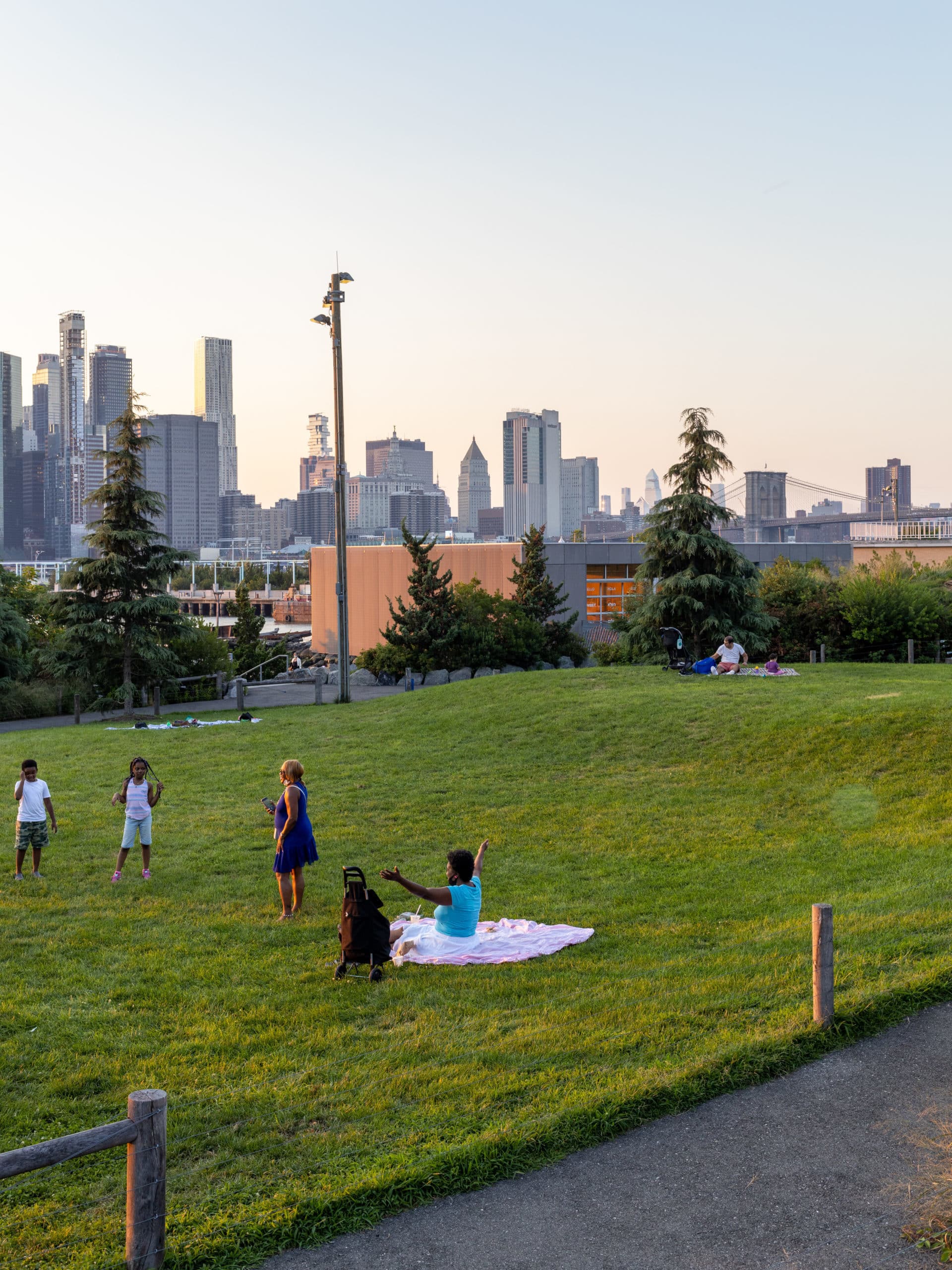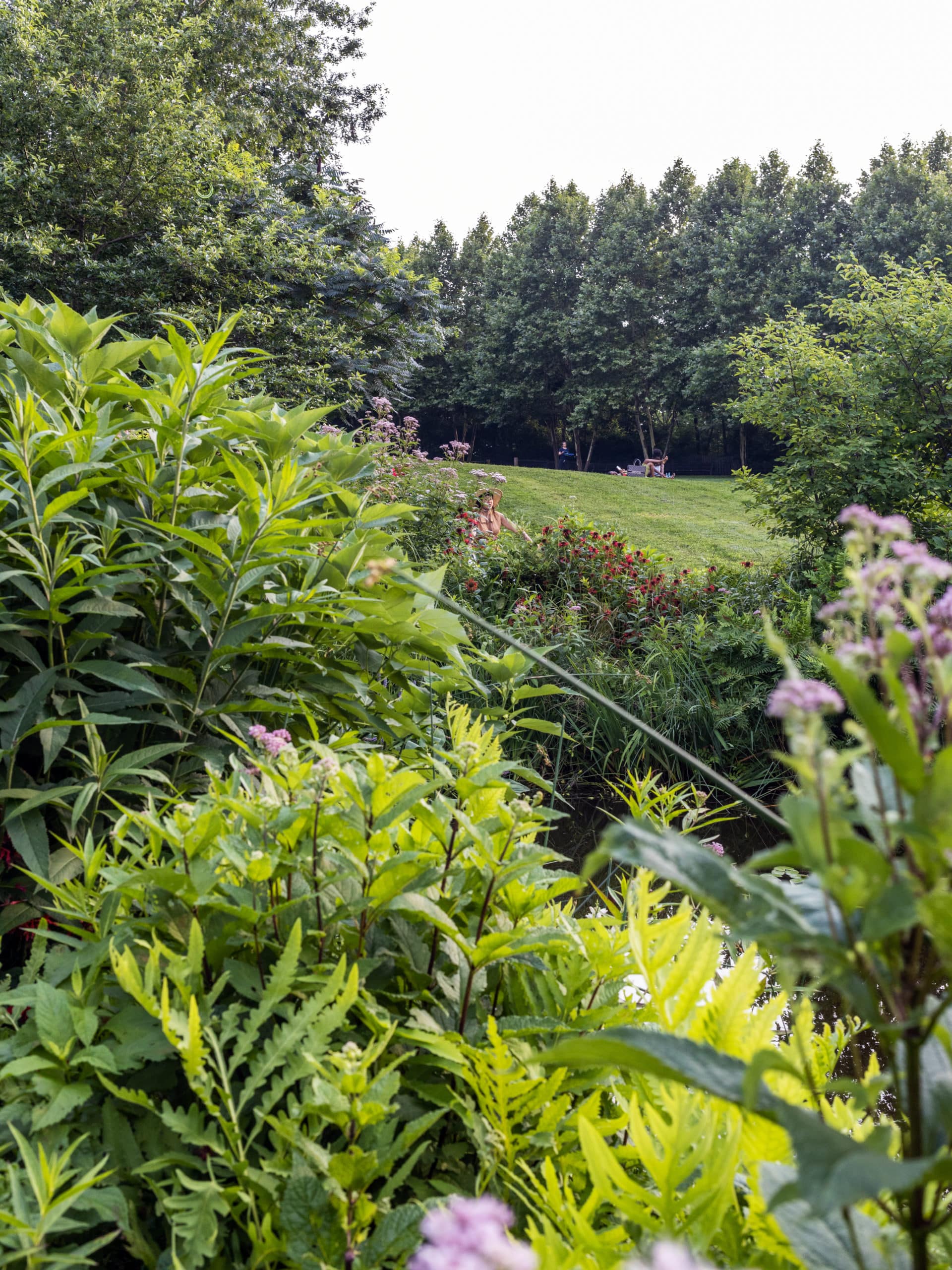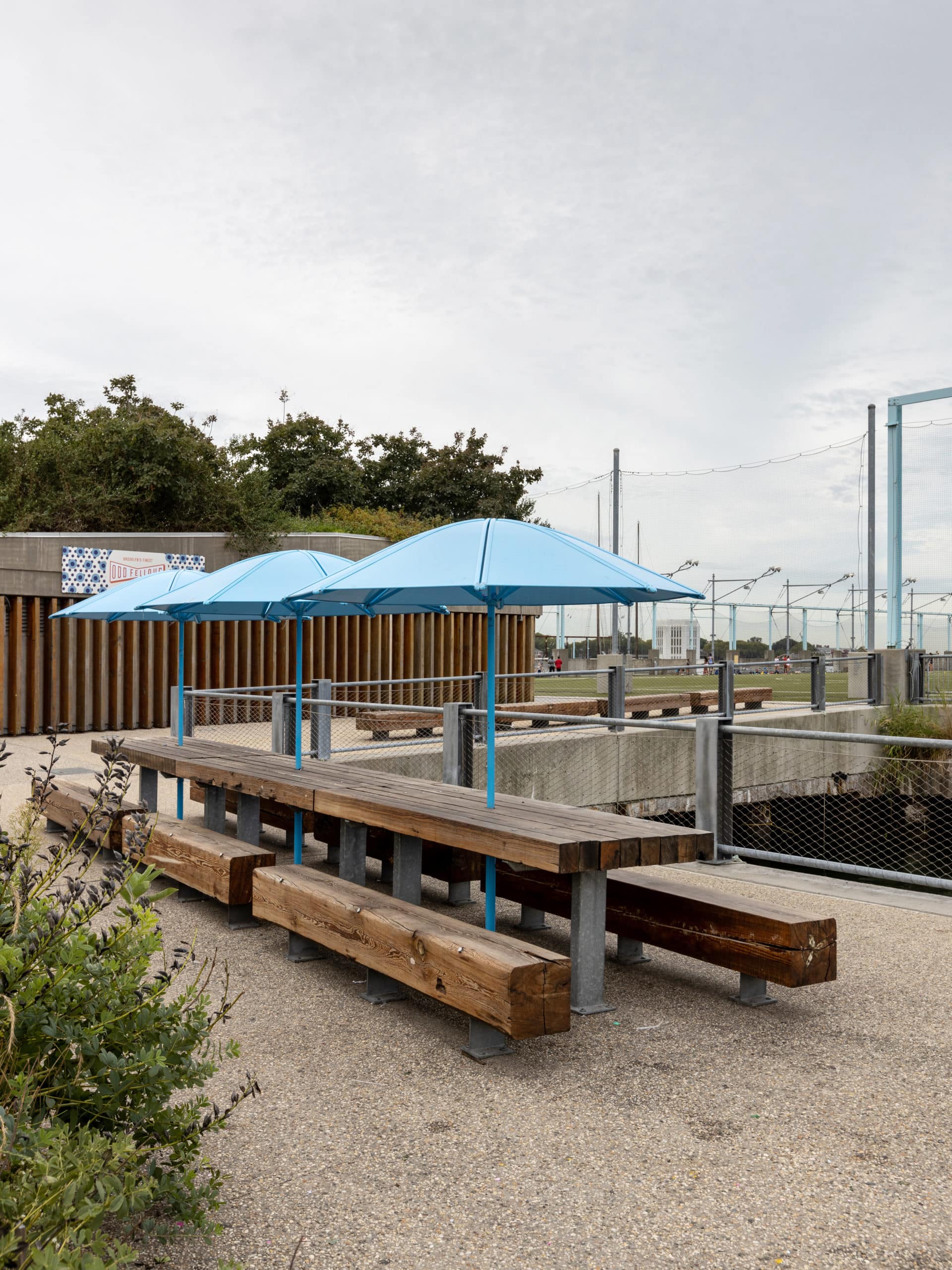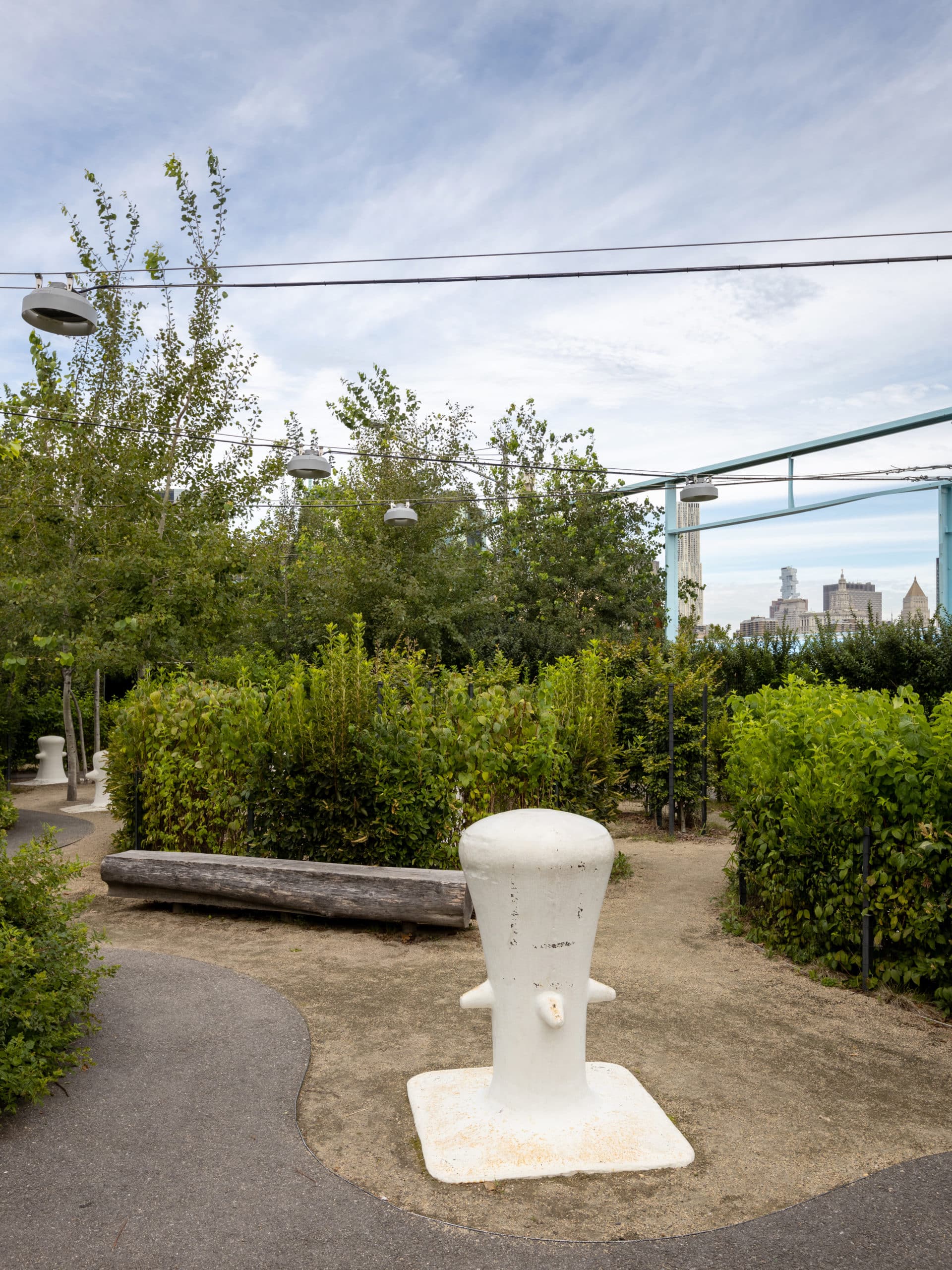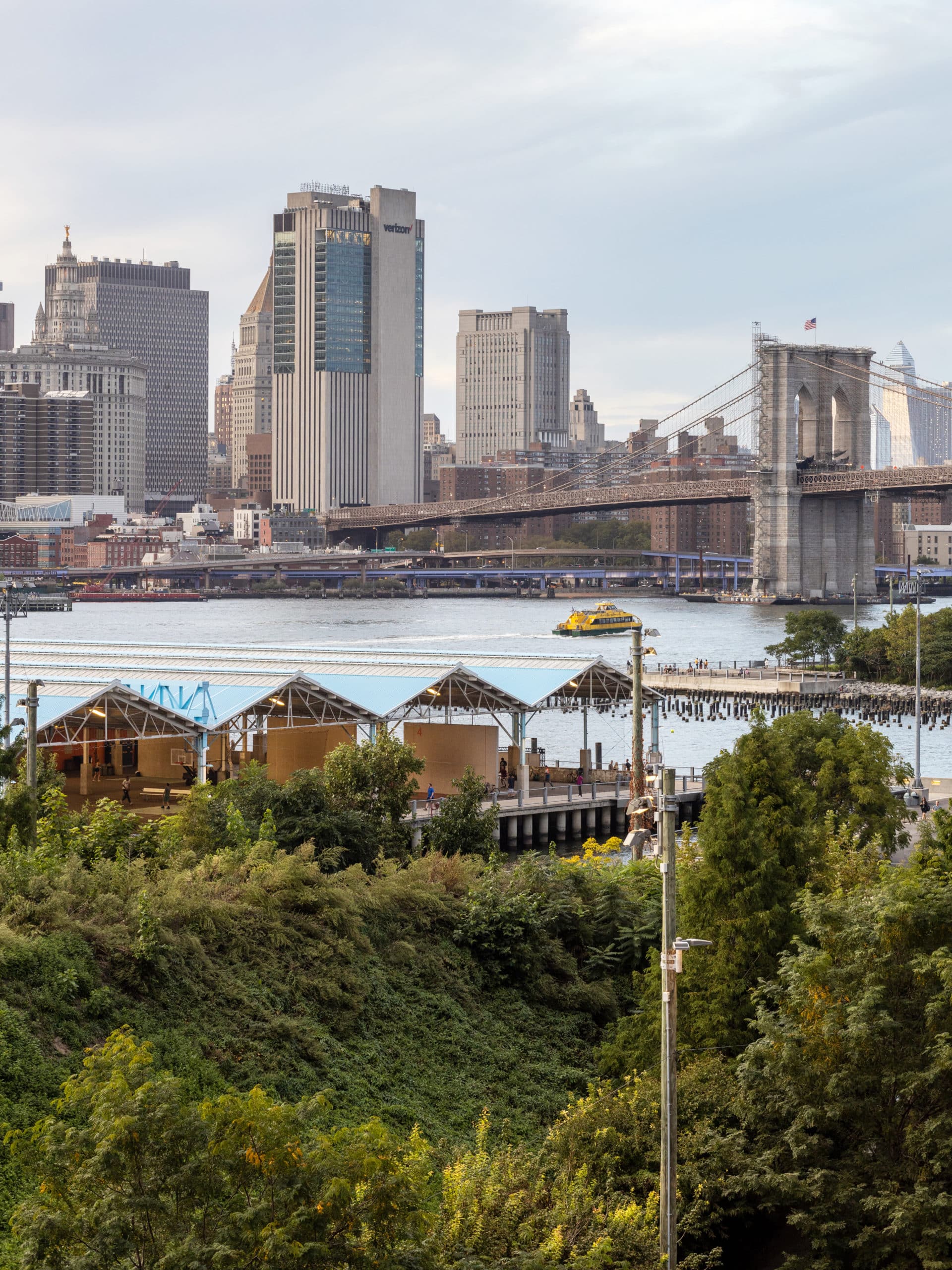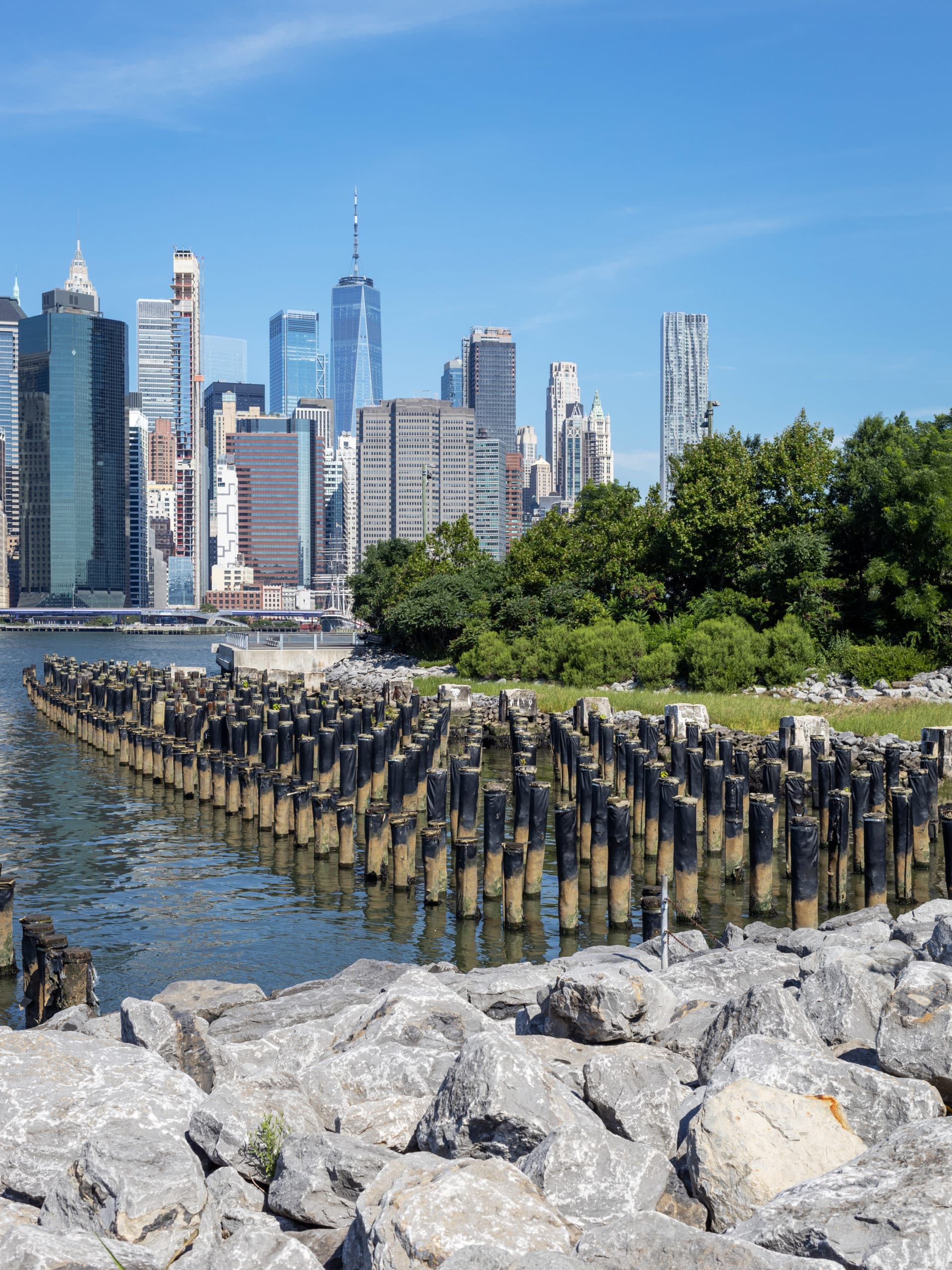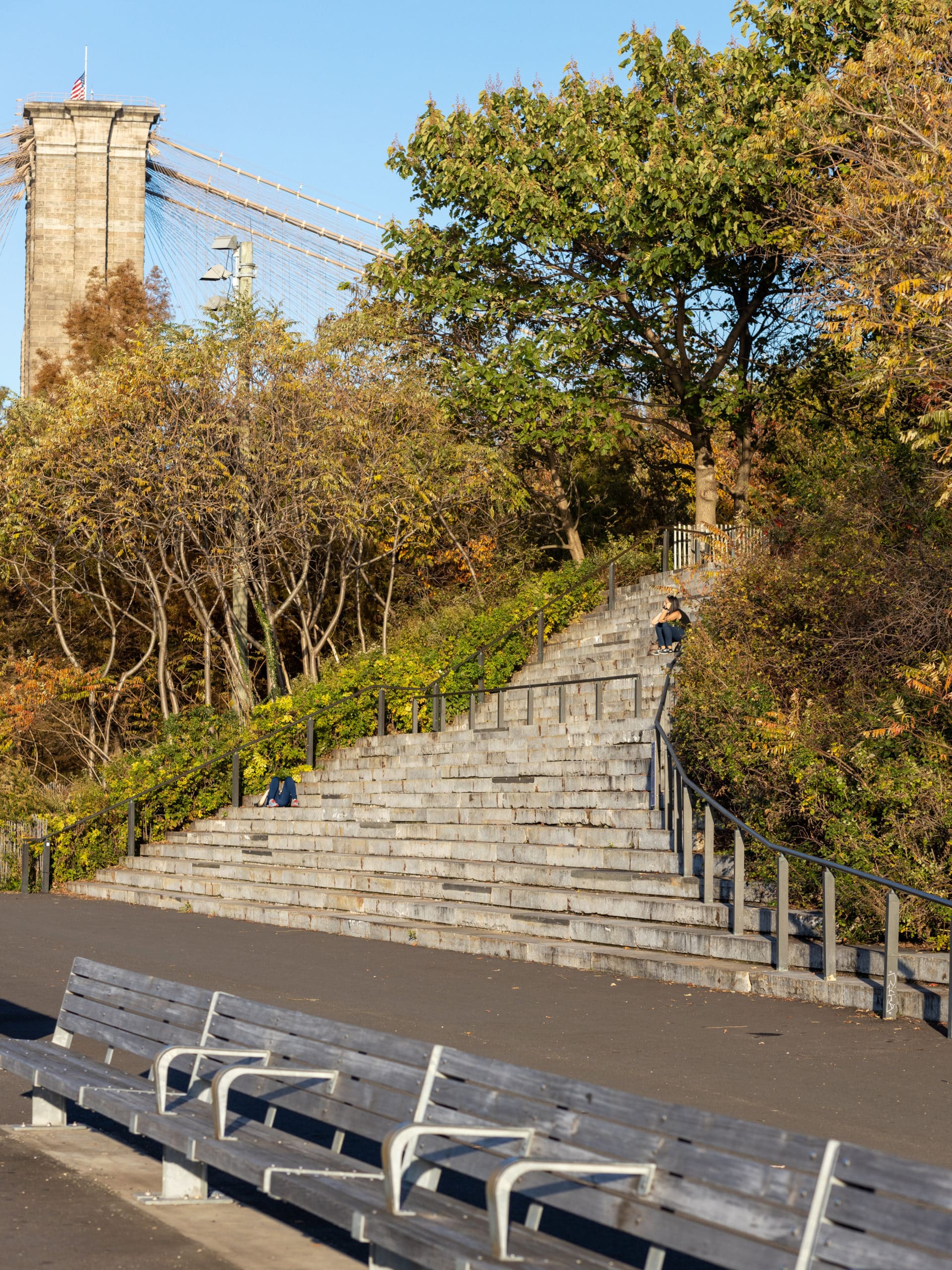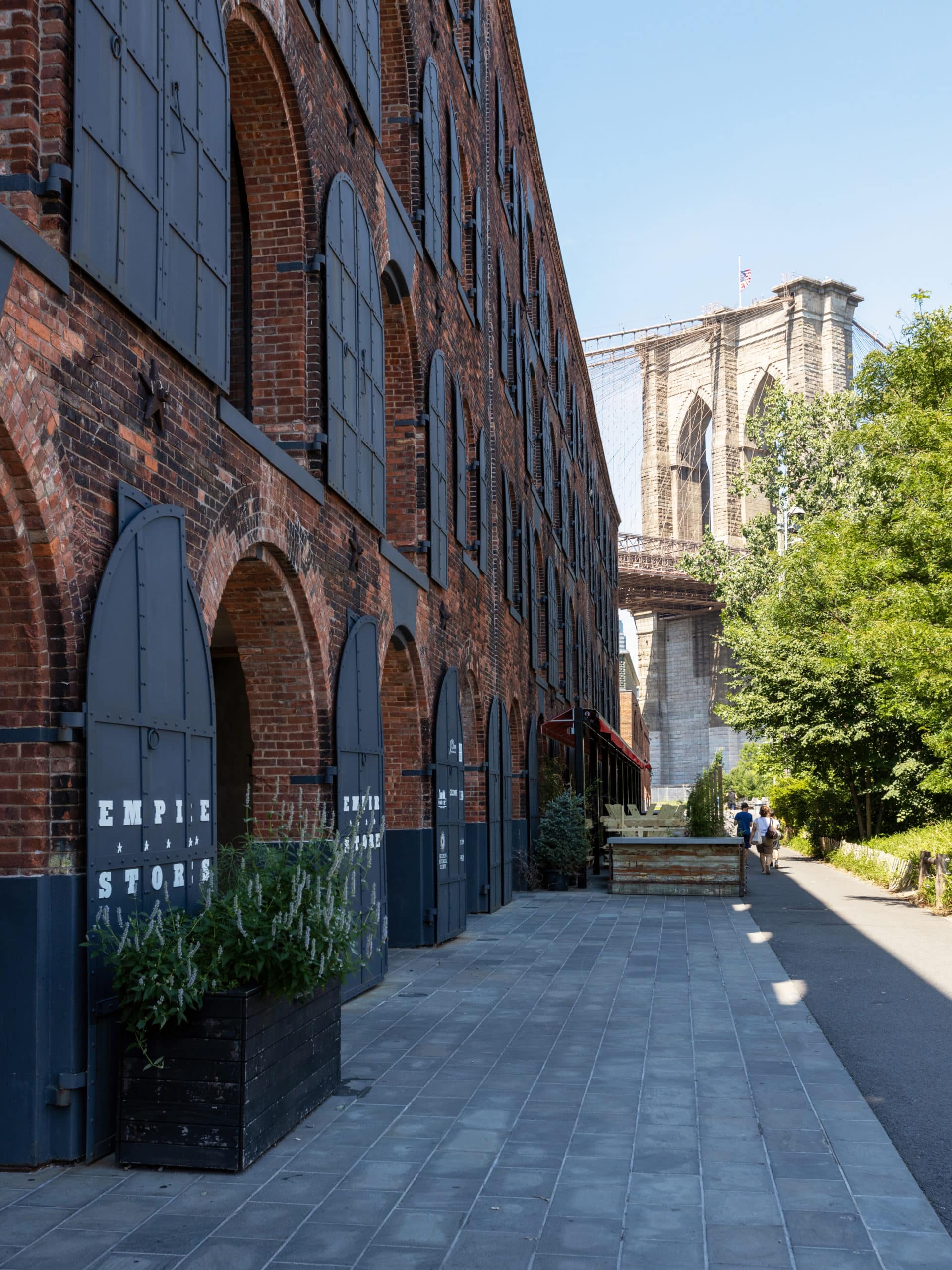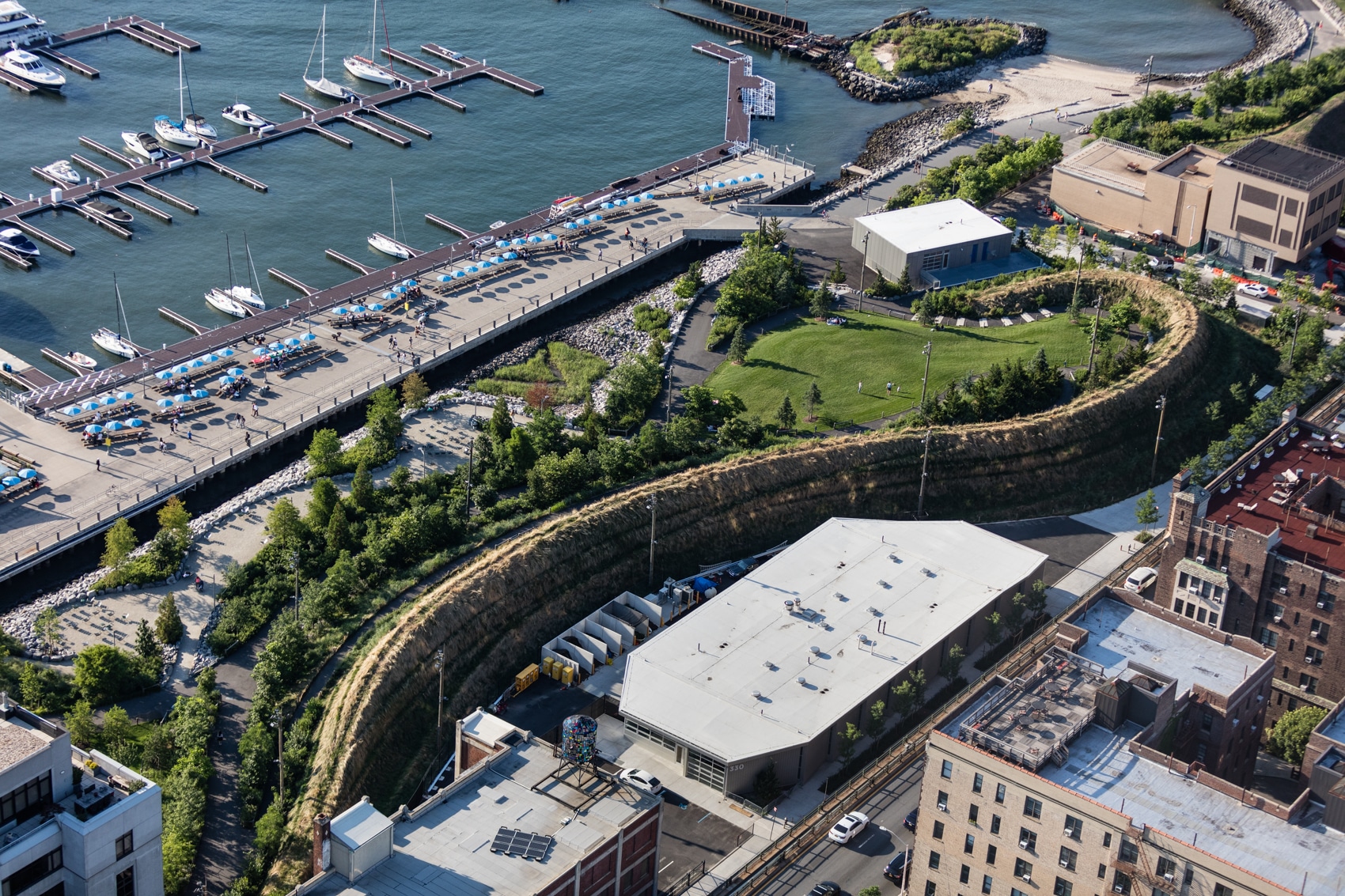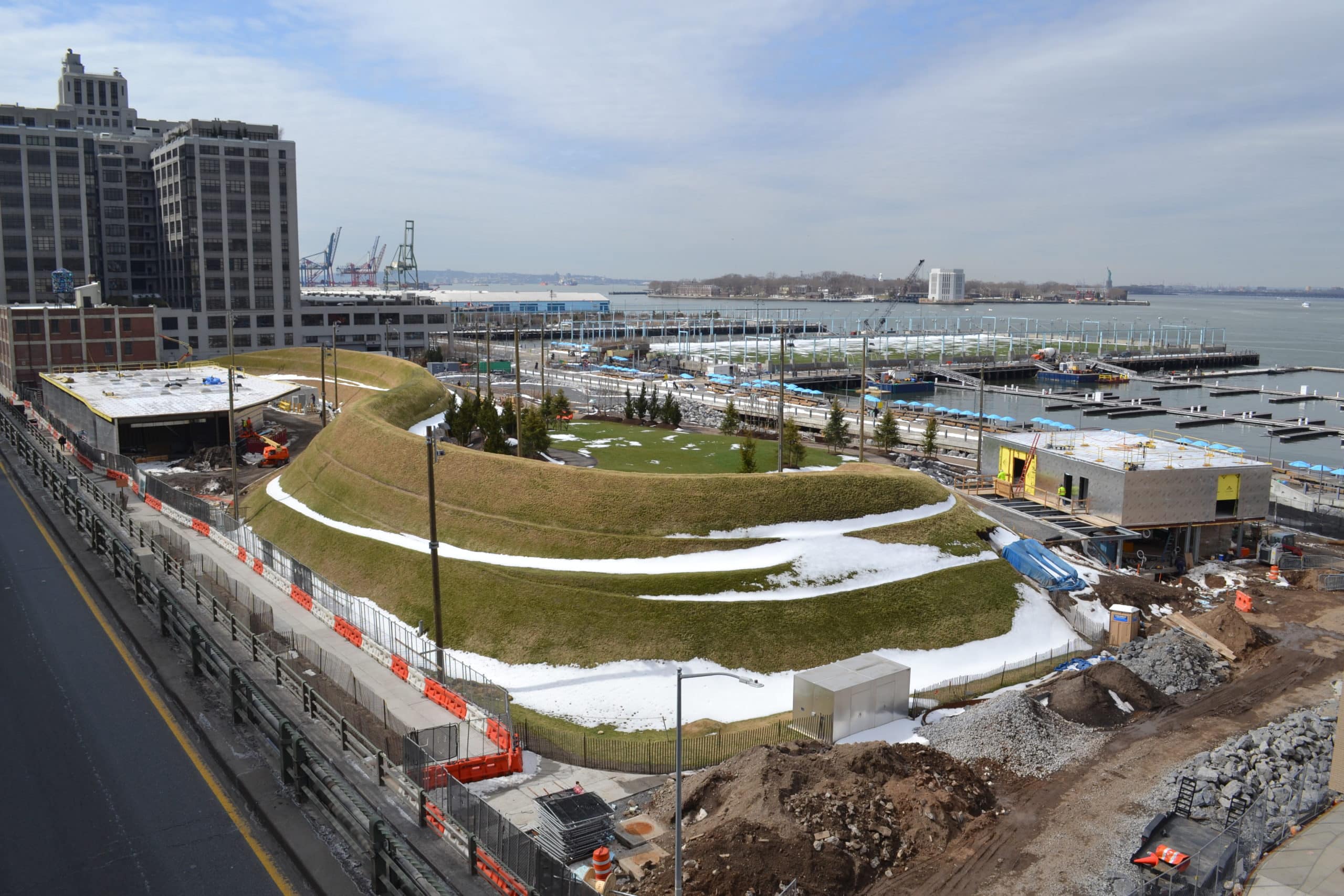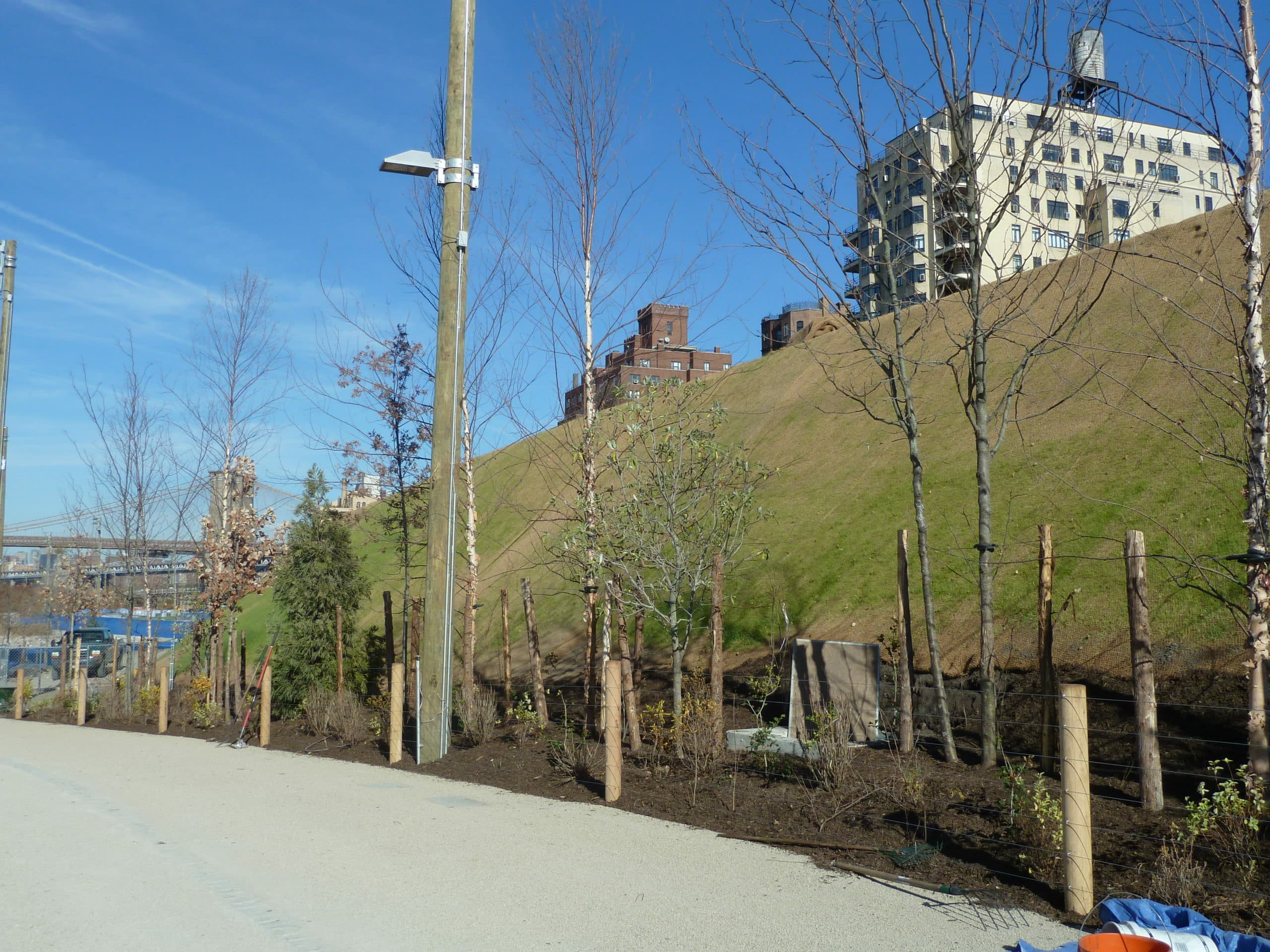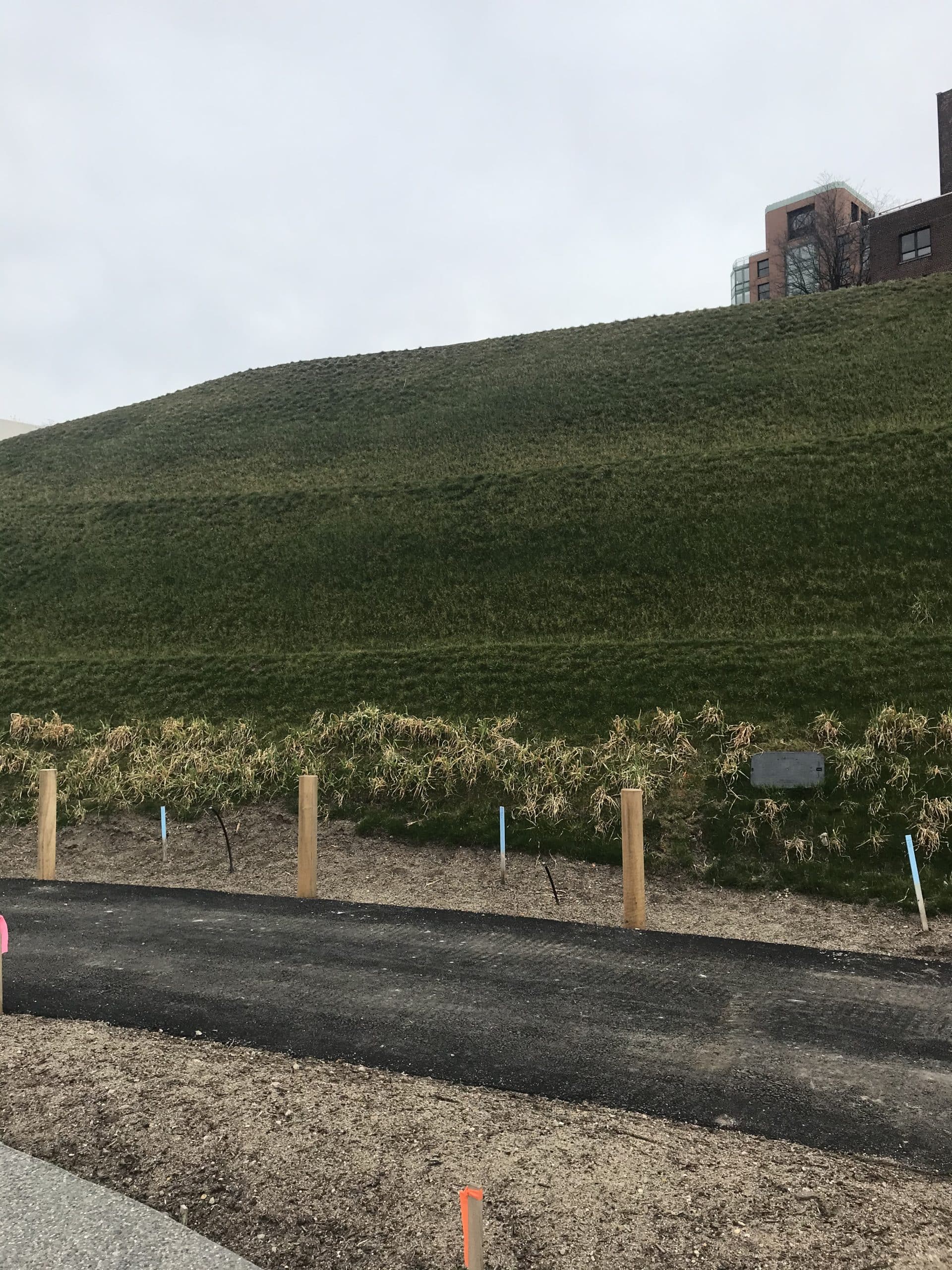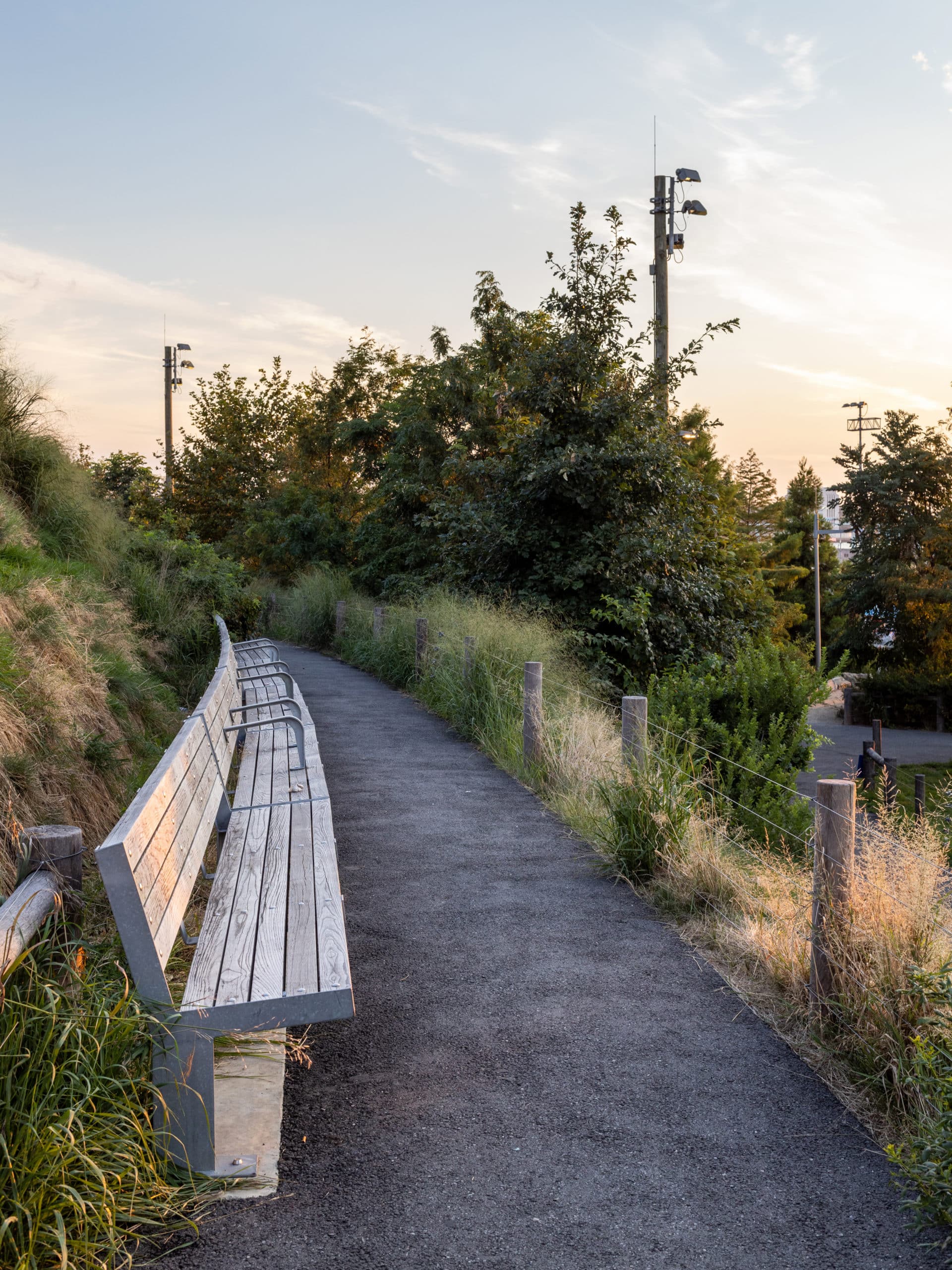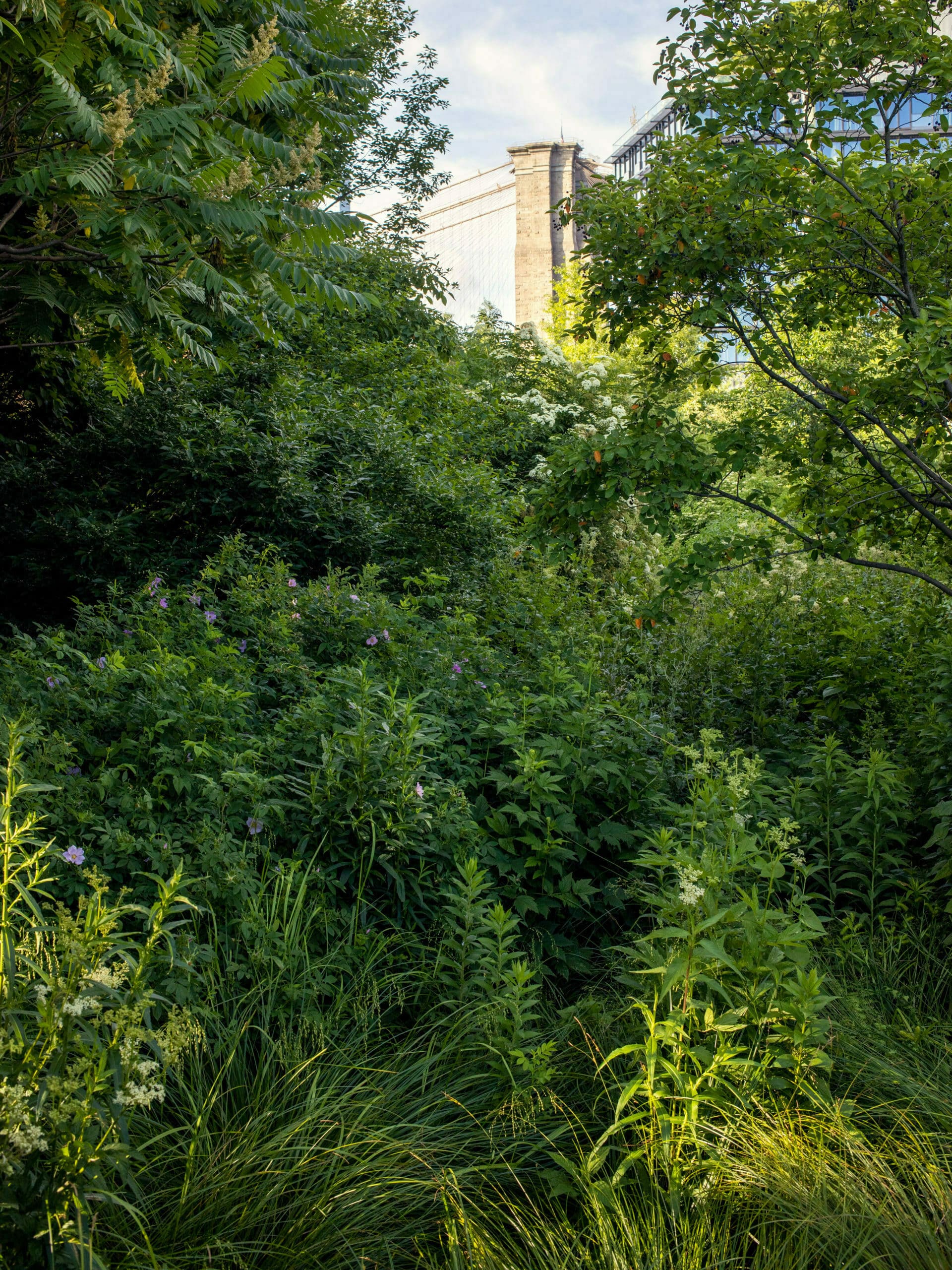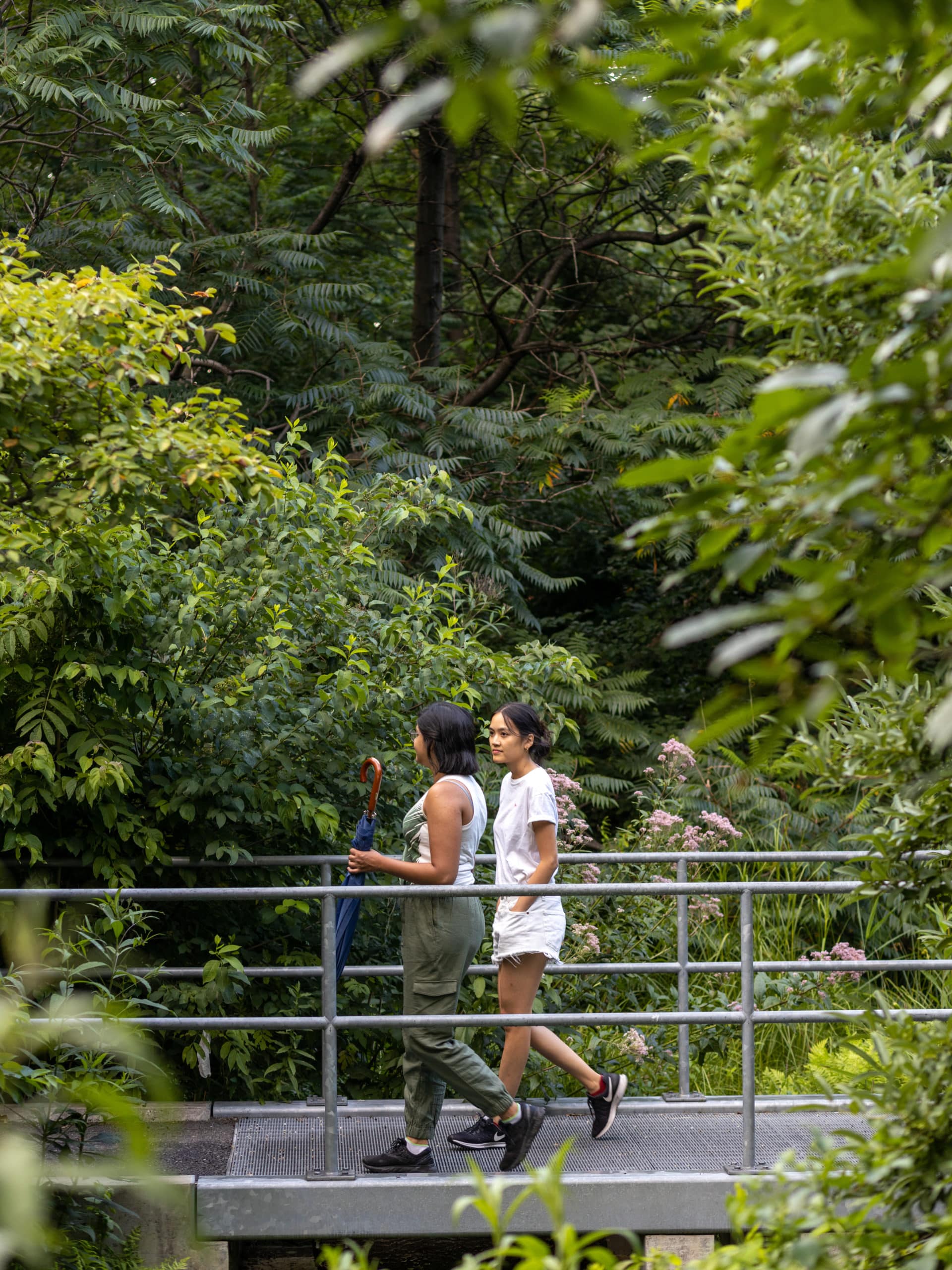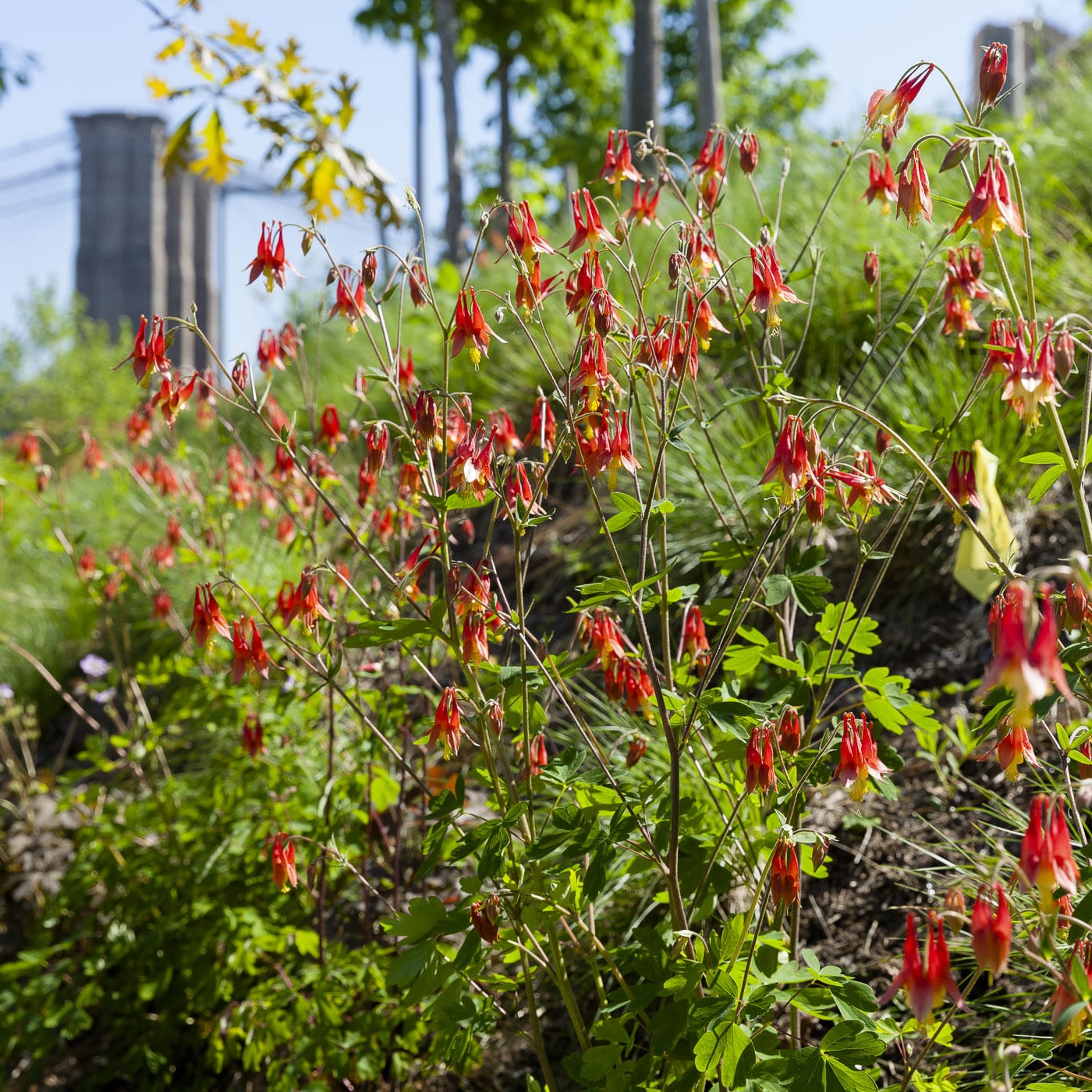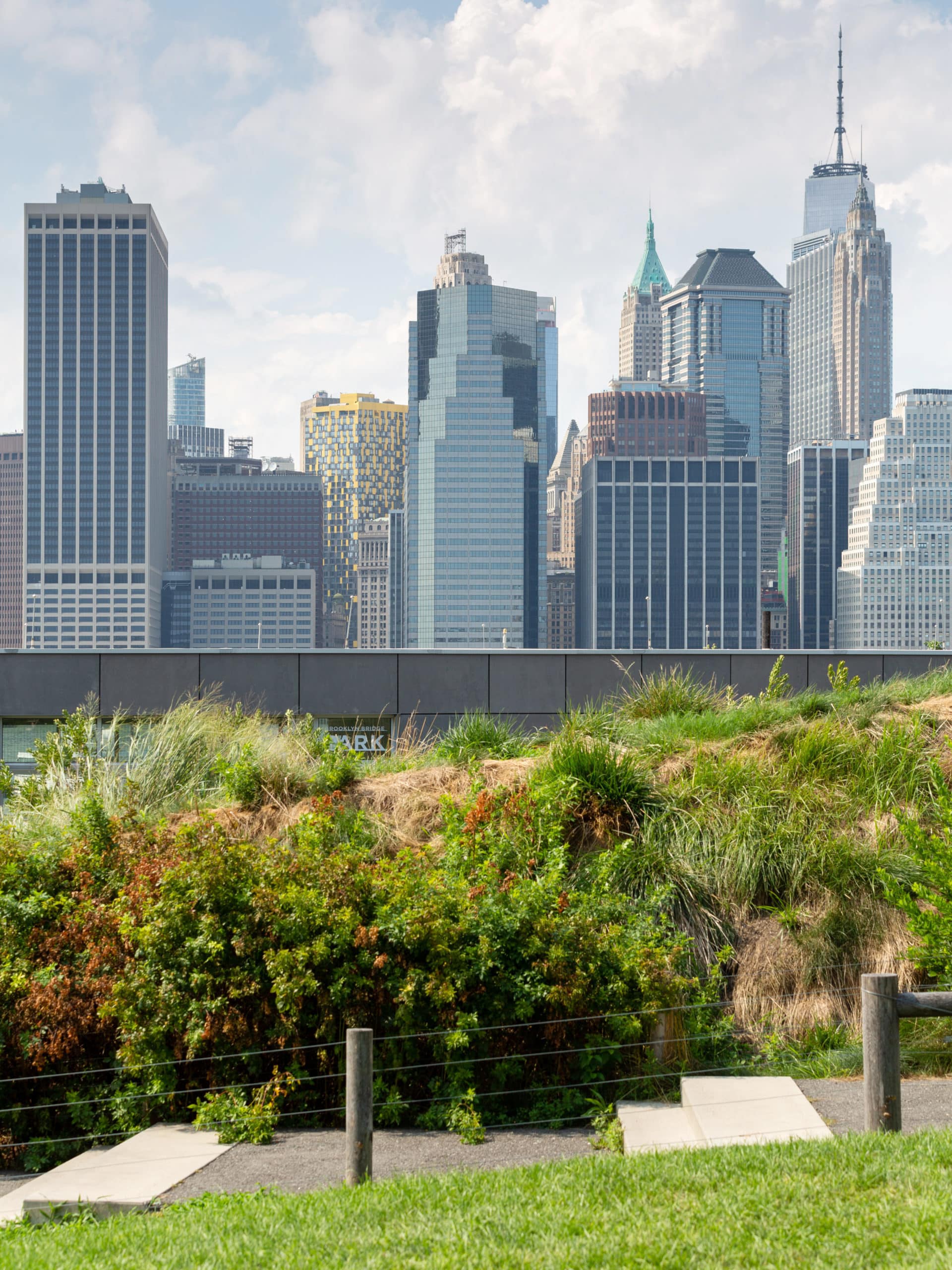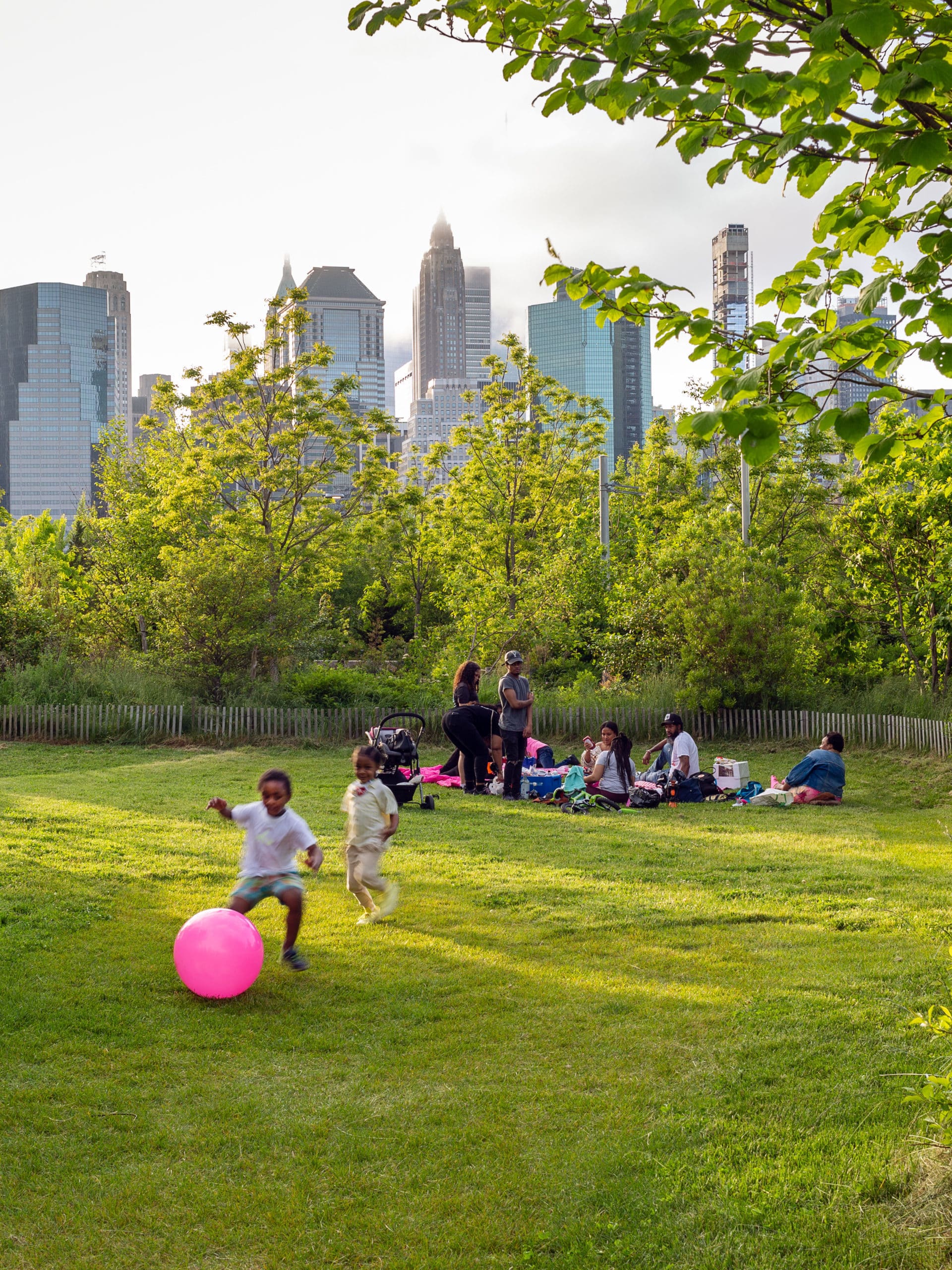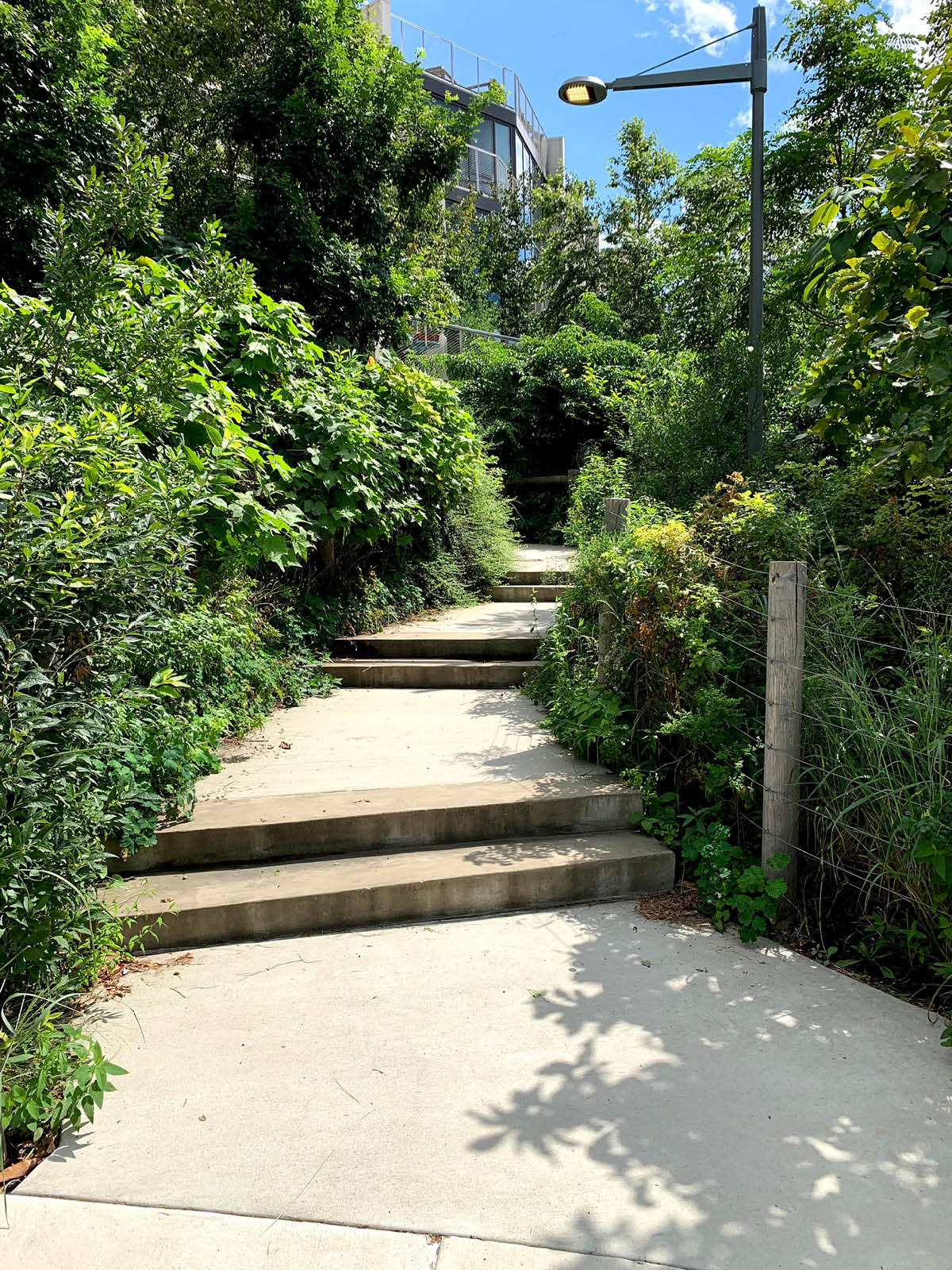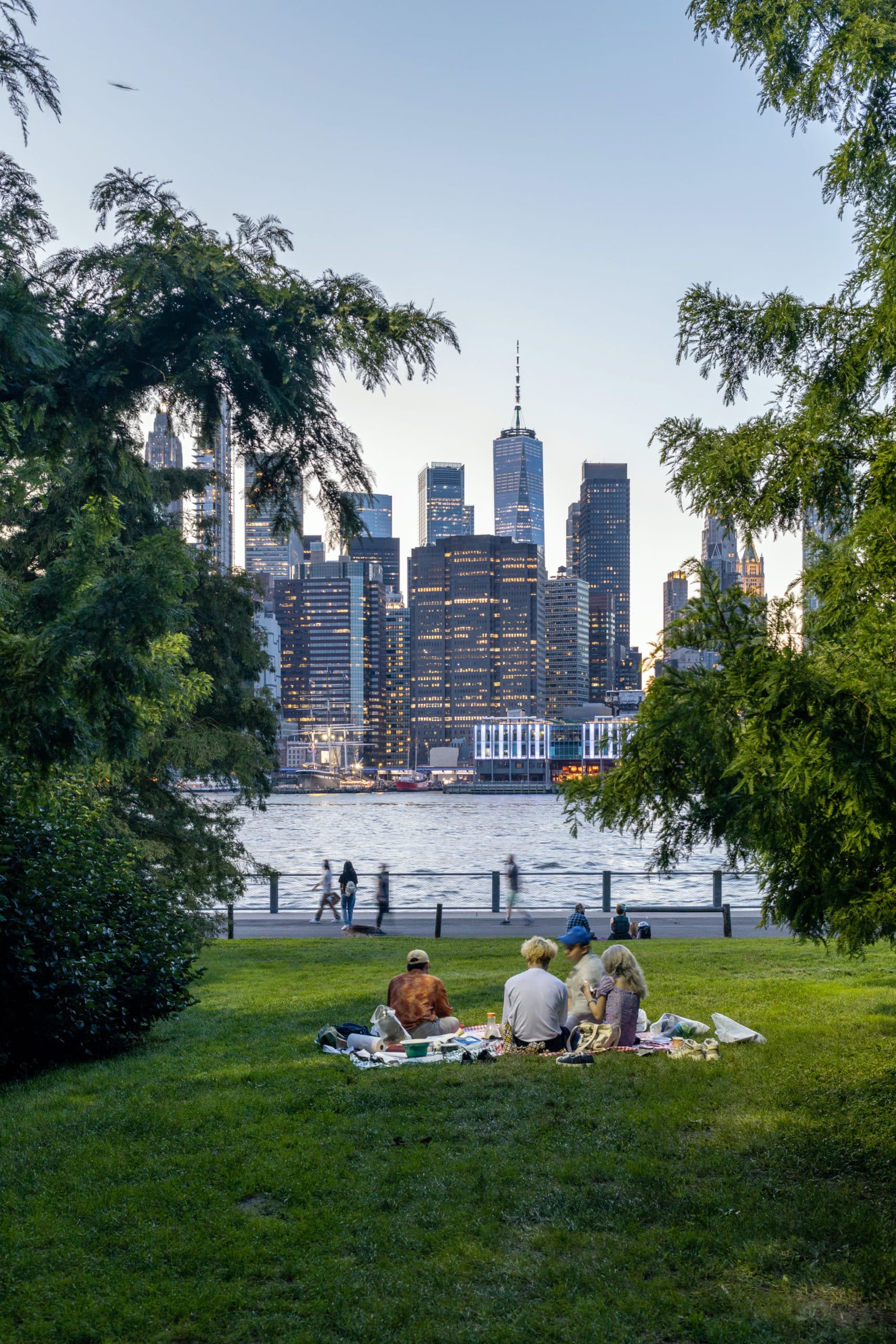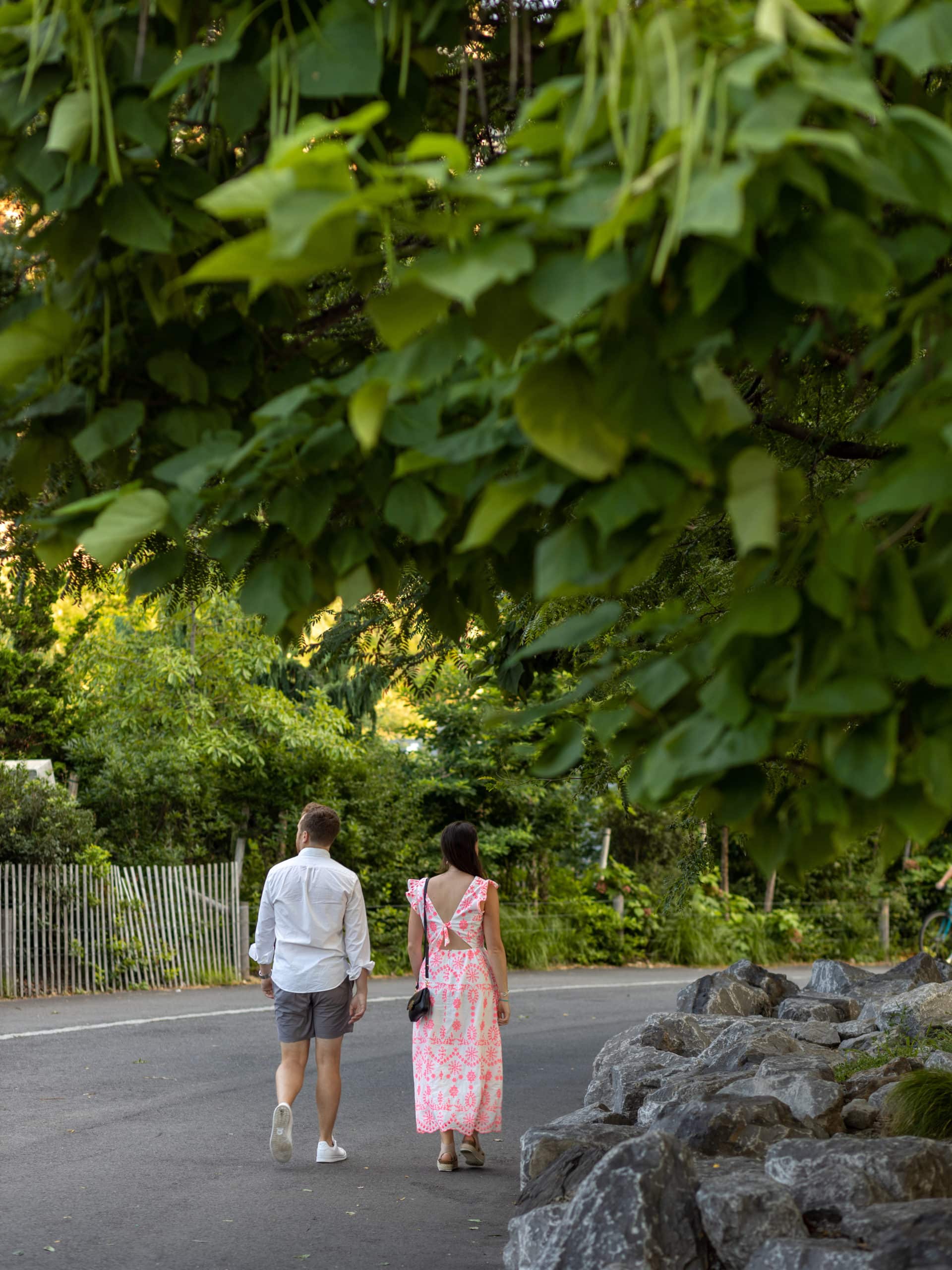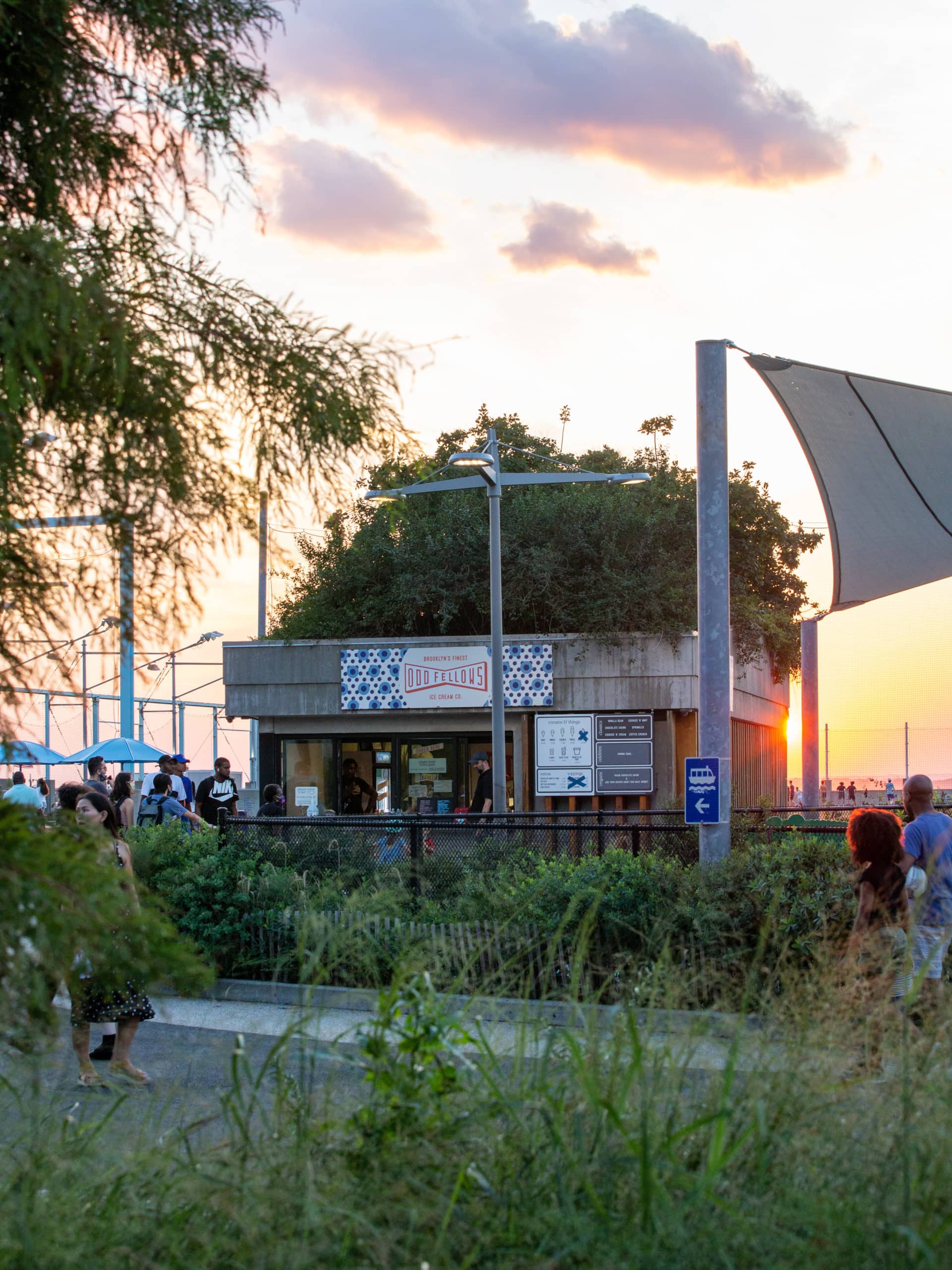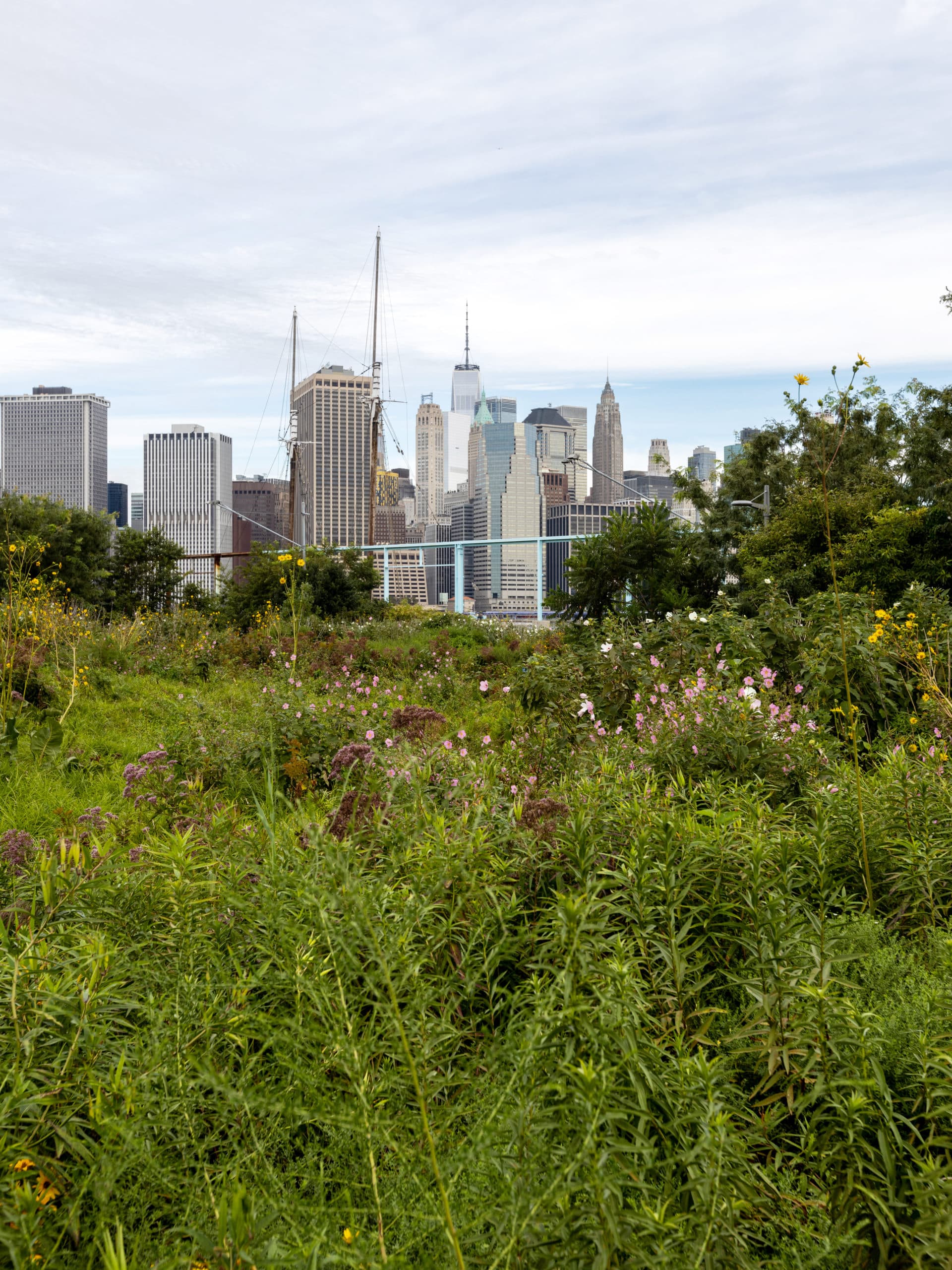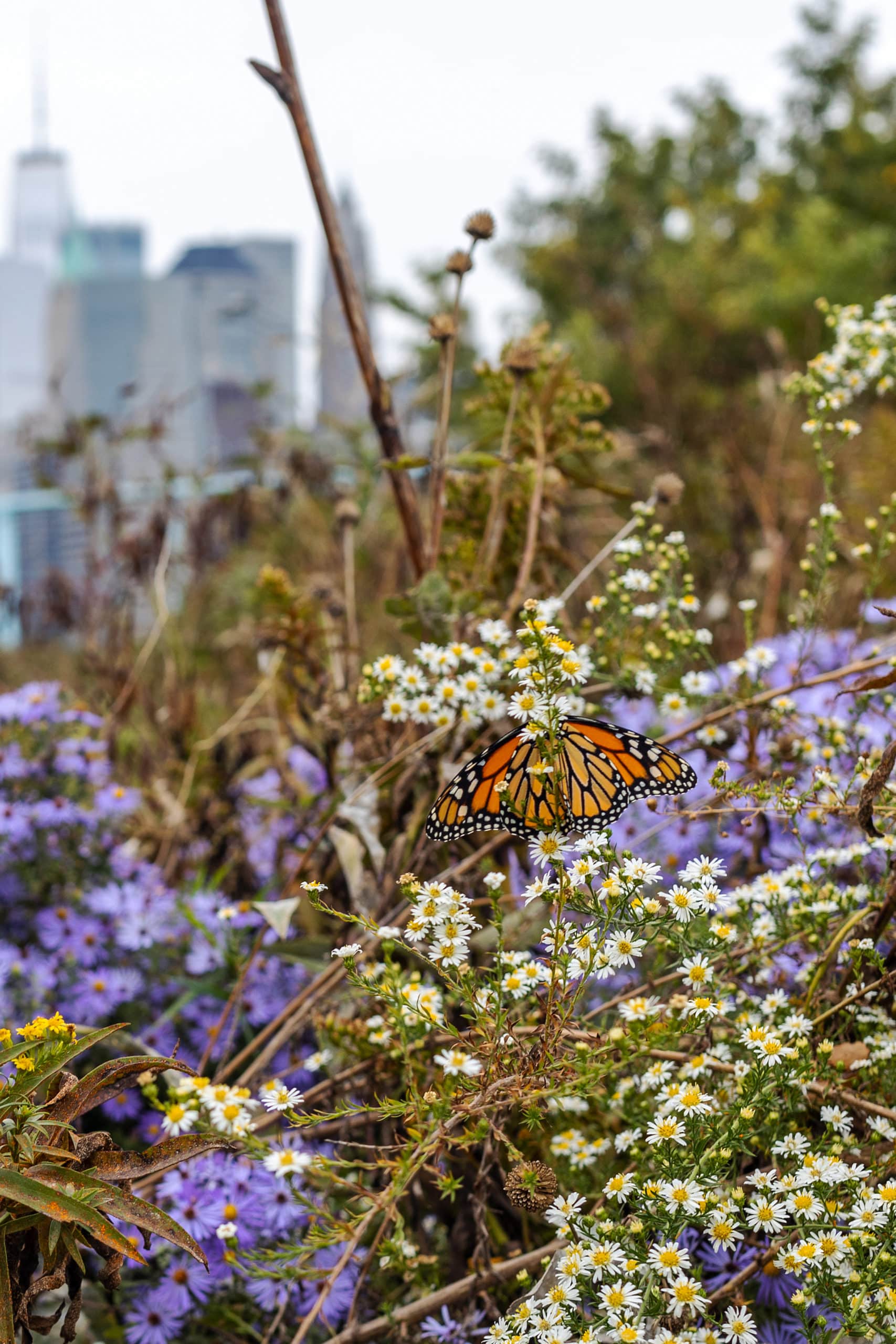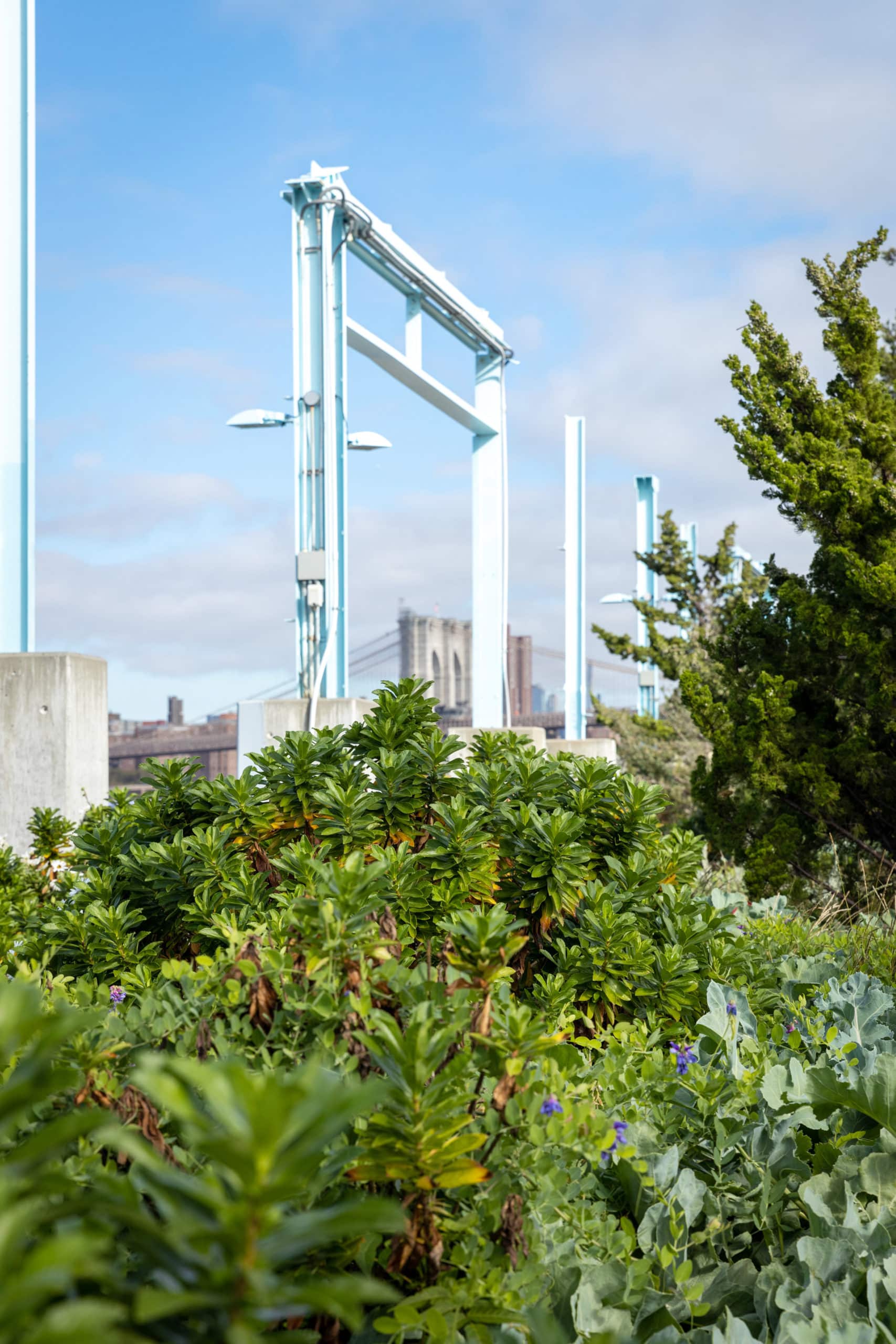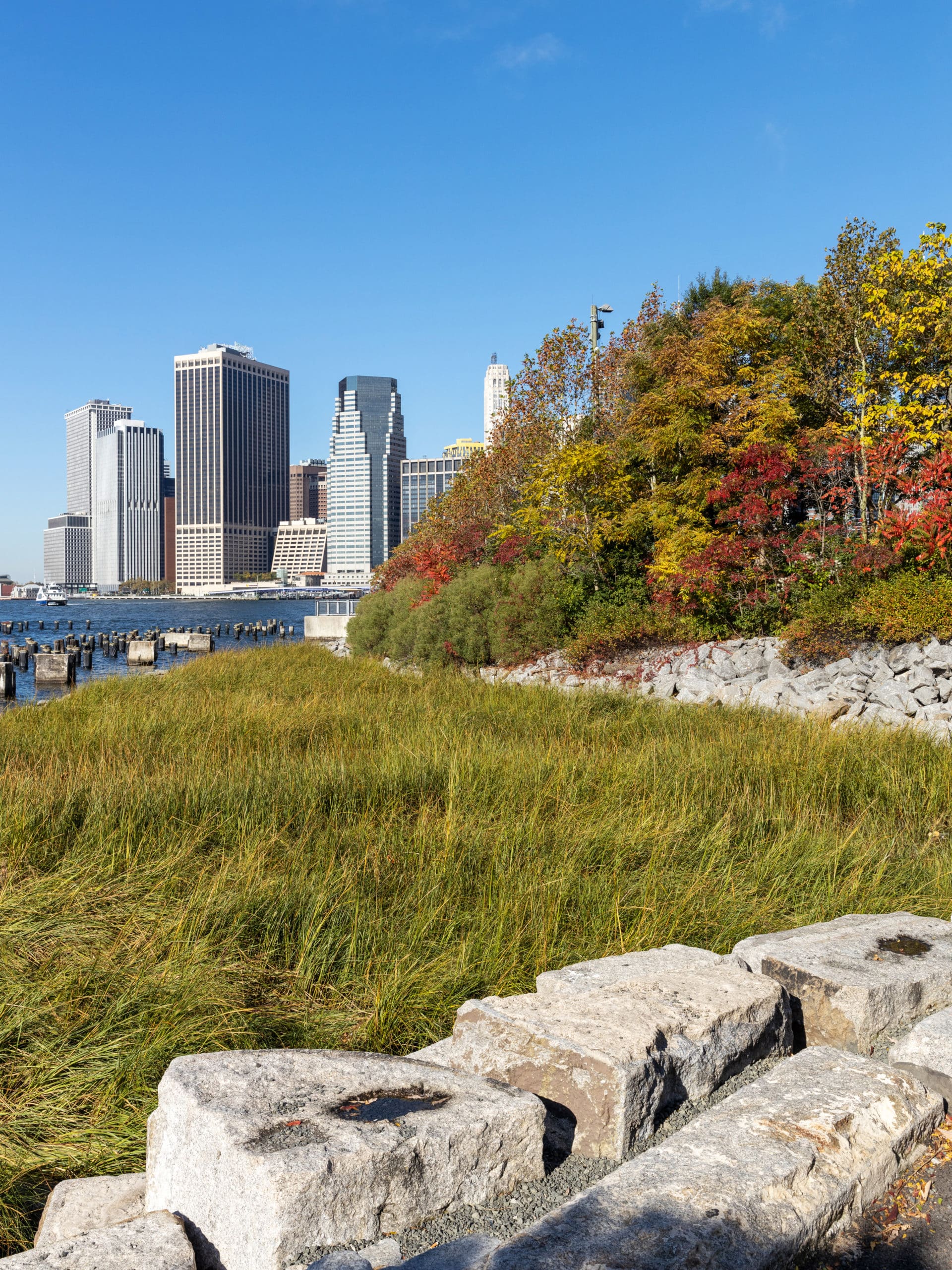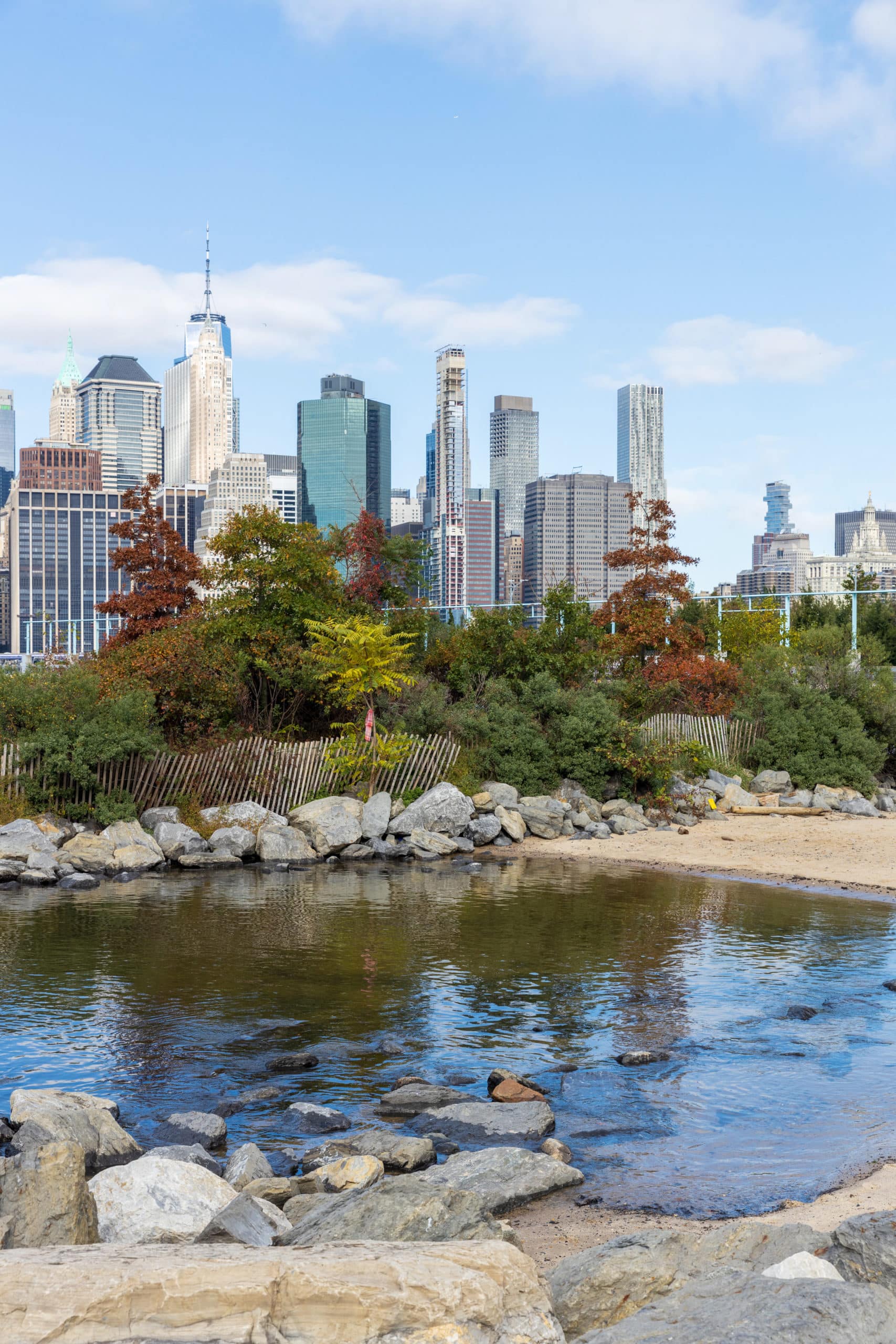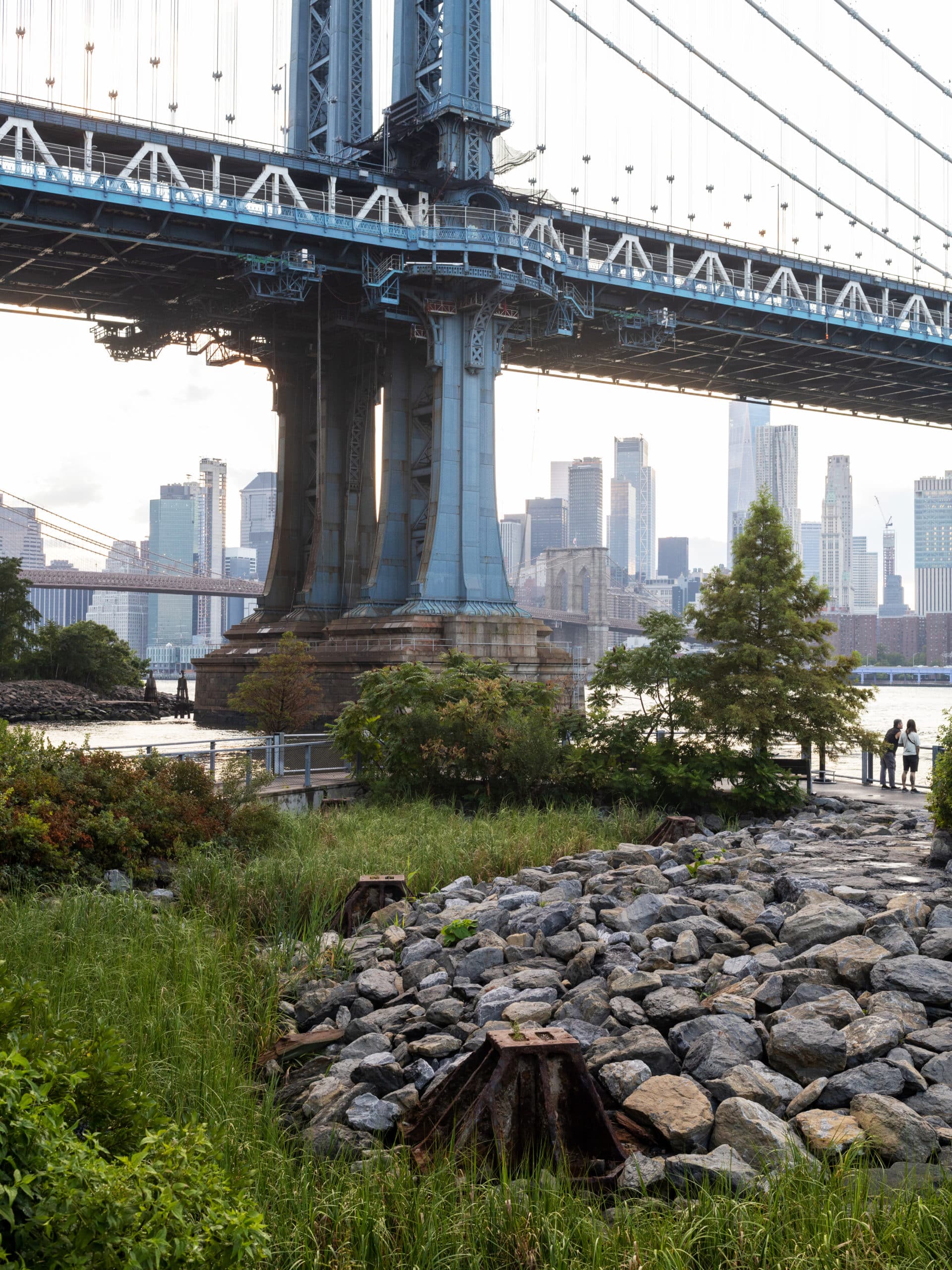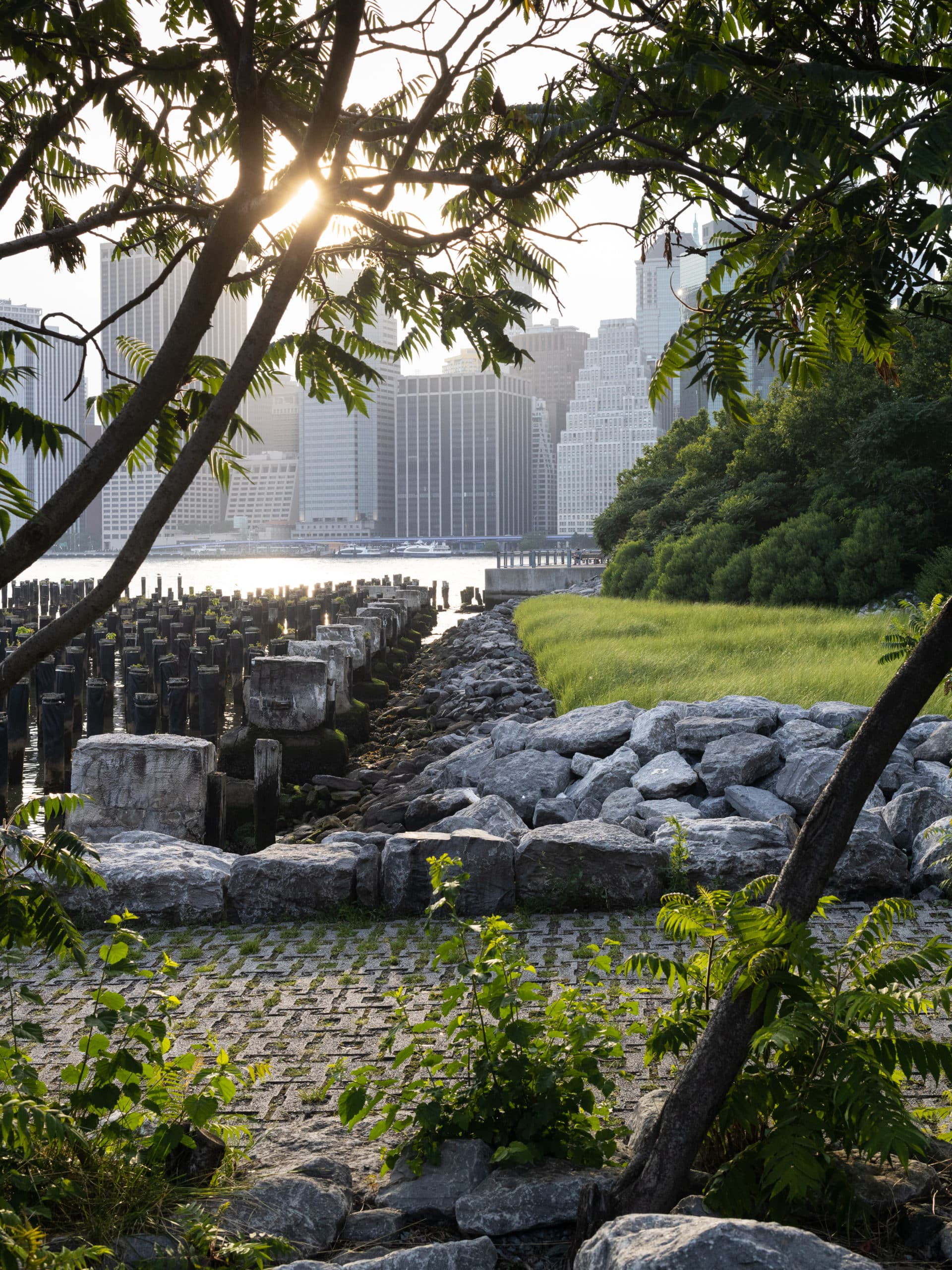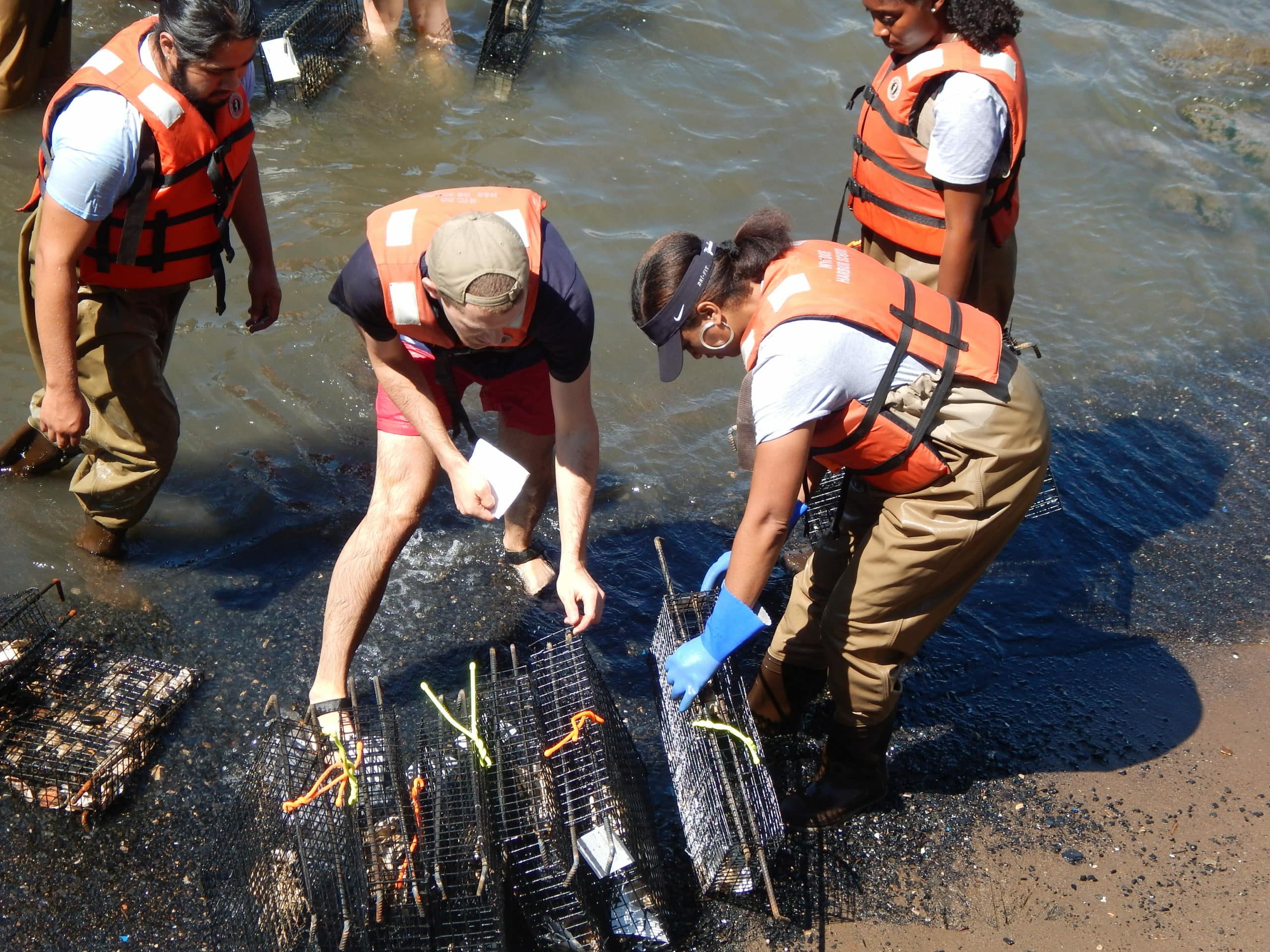From timber to pavement to lighting fixtures left over from the days when the piers were used for shipping, raw elements and existing structures have been recycled and reinvented for today’s park. Even the dips and peaks of Pier 1 and the sound attenuating berms are formed by salvaged material.
SALVAGED GRANITE
Working in partnership with the NYC Department of Parks & Recreation, Brooklyn Bridge Park was fortunate to receive surplus granite from two bridge reconstruction projects happening in other boroughs of New York City. The result is the creation of some of the park’s most iconic features.
Granite Prospect at Pier 1 is made of over 300 pieces (over 1,900 linear feet) of granite salvaged from the reconstructed Roosevelt Island Bridge.
The seating at the Pier 1 salt marsh and portions of the Empire Fulton Ferry landscape around Jane’s Carousel are constructed of 3,200 cubic yards of granite salvaged from the demolished Willis Avenue Bridge.
Salvaged granite from both the Roosevelt Island Bridge and the Willis Avenue Bridge went into the construction of the Granite Terrace on the Pier 3 Greenway Terrace.
RECYCLED FILL MATERIAL
Brooklyn Bridge Park has benefited enormously from a synergetic relationship with another City partner. The Metropolitan Transportation Authority (MTA) began construction on its East Side Access Project in 2001. This massive public works project (still on-going) will connect the Long Island Rail Road’s (LIRR) Main and Port Washington Lines in Queens to a new LIRR terminal beneath Grand Central Terminal in Manhattan.
From this extensive tunneling project, Brooklyn Bridge Park secured clean bulk fill to create the stunning topography on Pier 1 as well as other portions of the park. The highest point at Pier 1 is twenty feet above the existing pier deck, creating new views to Manhattan, the New York Harbor, and the Williamsburg Bridge.
On Pier 1, approximately 18,000 cubic yards of manufactured soil was used for the landscape. Beneath this soil lies 40,000 cubic yards of clean bulk fill, salvaged from Long Island Railroad drilling operations for the East Side Access project. On Pier 6, approximately 8,000 cubic yards of manufactured soil lies atop 16,000 cubic yards of clean bulk fill. The sound attenuating berm, which reduces noise in the park from the neighboring Brooklyn-Queens Expressway, used 50,000 cubic yards of clean bulk fill in its construction.
RECYCLED WOOD
Park benches, as well as cladding for new park structures, site furnishings, and wooden decking will be constructed from old growth Longleaf Yellow Pine that has been salvaged from the careful deconstruction of the Cold Storage Buildings on the uplands of Pier 1. This wood is naturally rot resistant and extremely beautiful and will add a unique material character to the park.
Where the selection of new wood for the park was necessitated, the choice was guided by a balanced understanding of each material’s durability, expense and level of sustainability. An example of this is the use of locally and sustainably harvested and manufactured rot-resistant black locust (robinia pseudoacacia) wood for park bollards and fence posts.
In this video, learn about the park’s use of Longleaf Yellow Pine wood, salvaged from the Cold Storage Warehouses formerly located on the uplands of Pier 1.

